Antalya isn’t just a coastal destination—it’s a full-spectrum living experience. In a single day, you can hike through ancient ruins in the mountains, swim in turquoise water, and walk back past Roman walls and wild pomegranate trees. It’s a place where history, nature, and daily life are inseparable. And for digital nomads looking to combine deep focus with deep time, Antalya offers an unexpected kind of richness.
In this full guide, we’ll walk you through what it’s like to live, work, and explore in Antalya—and link to our more detailed guides on coworking, ancient cities, swimming spots, vegan food, and day trips up and down the coast.
Why Antalya?
There are few places where you can open your laptop beside the sea and close it beside a 2,000-year-old amphitheater. Antalya is one of them. Located along Turkey’s Turquoise Coast, it’s a city of contrasts: modern and ancient, relaxed and bustling, coastal and mountainous.
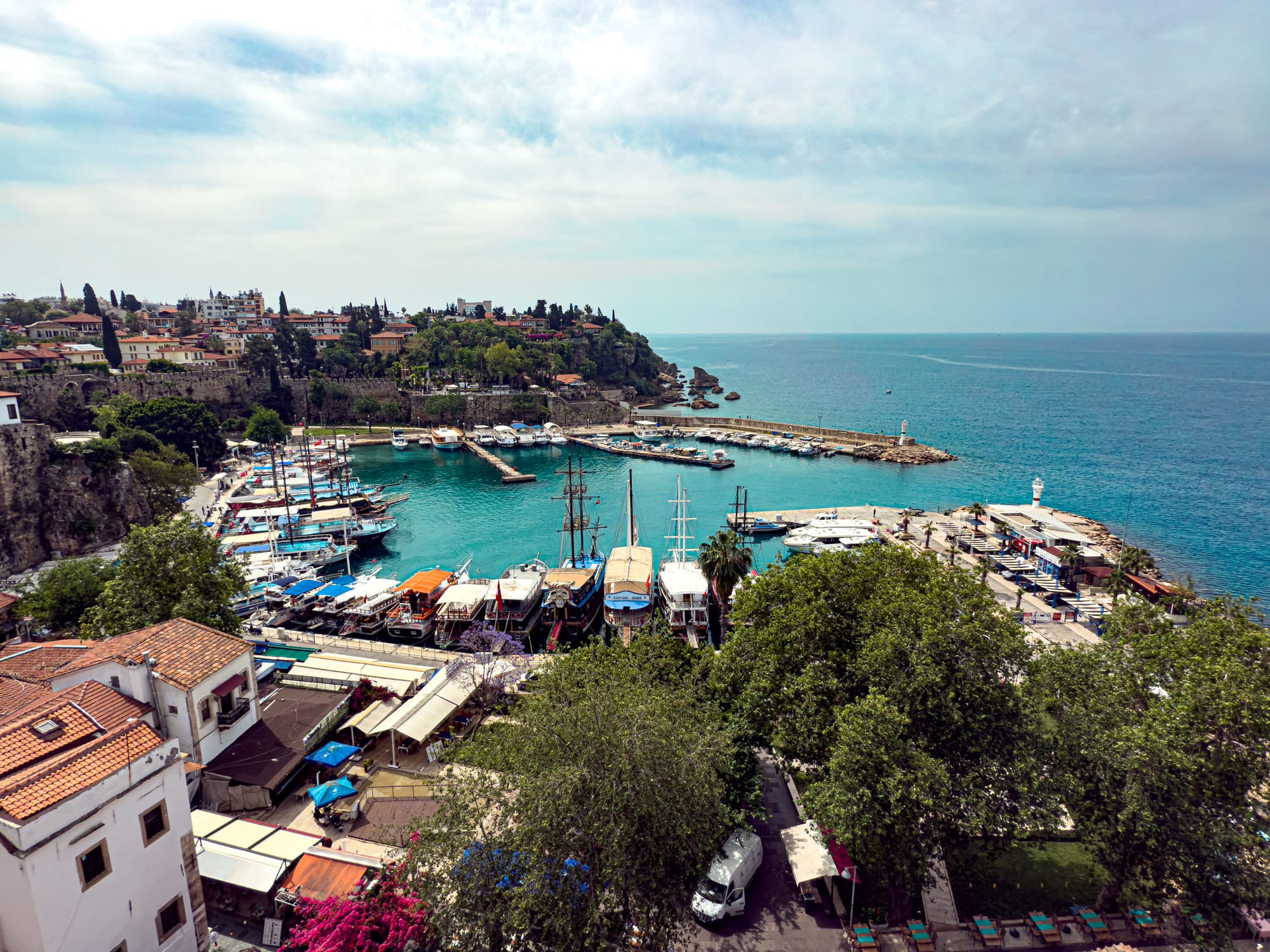


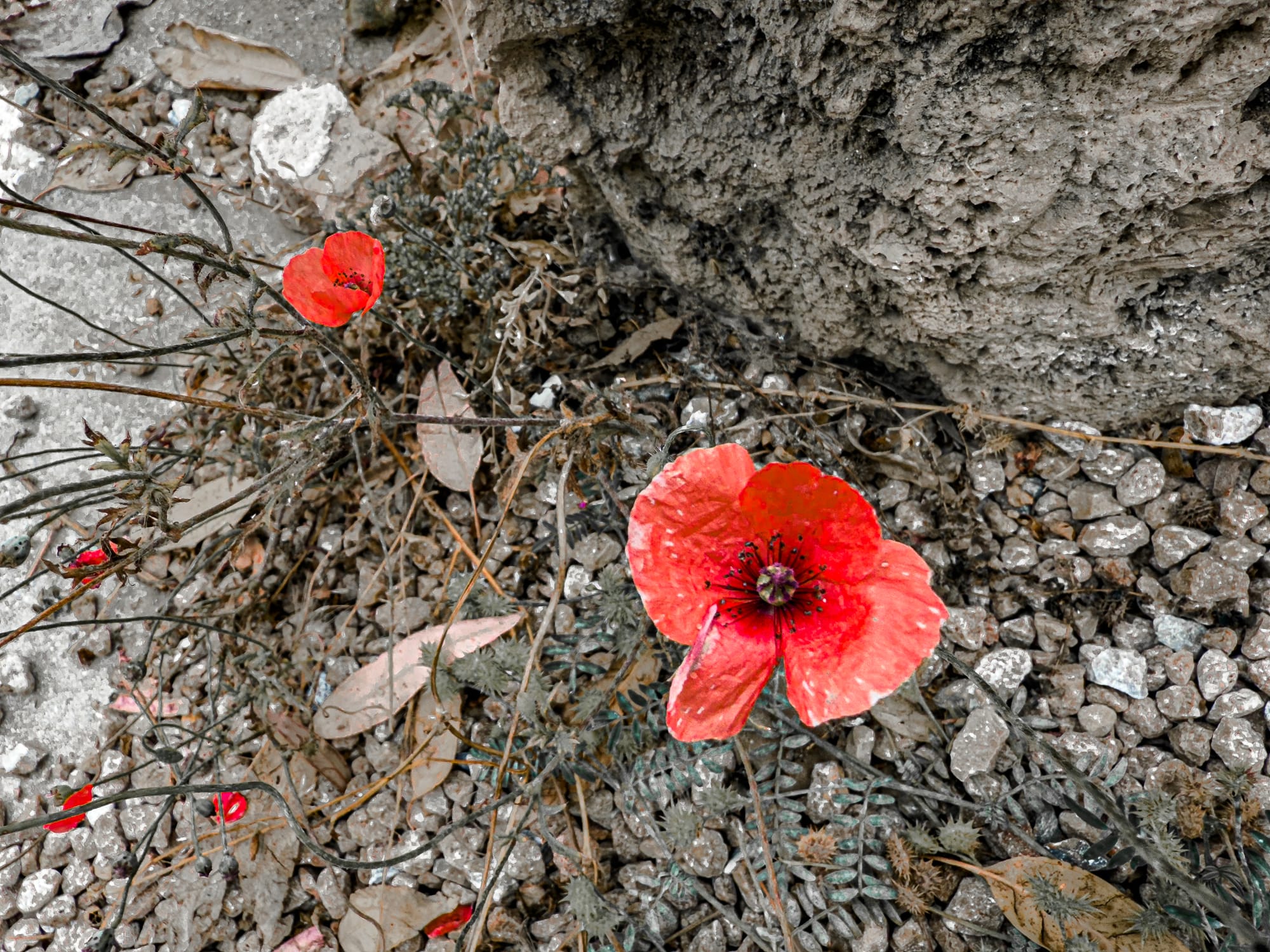
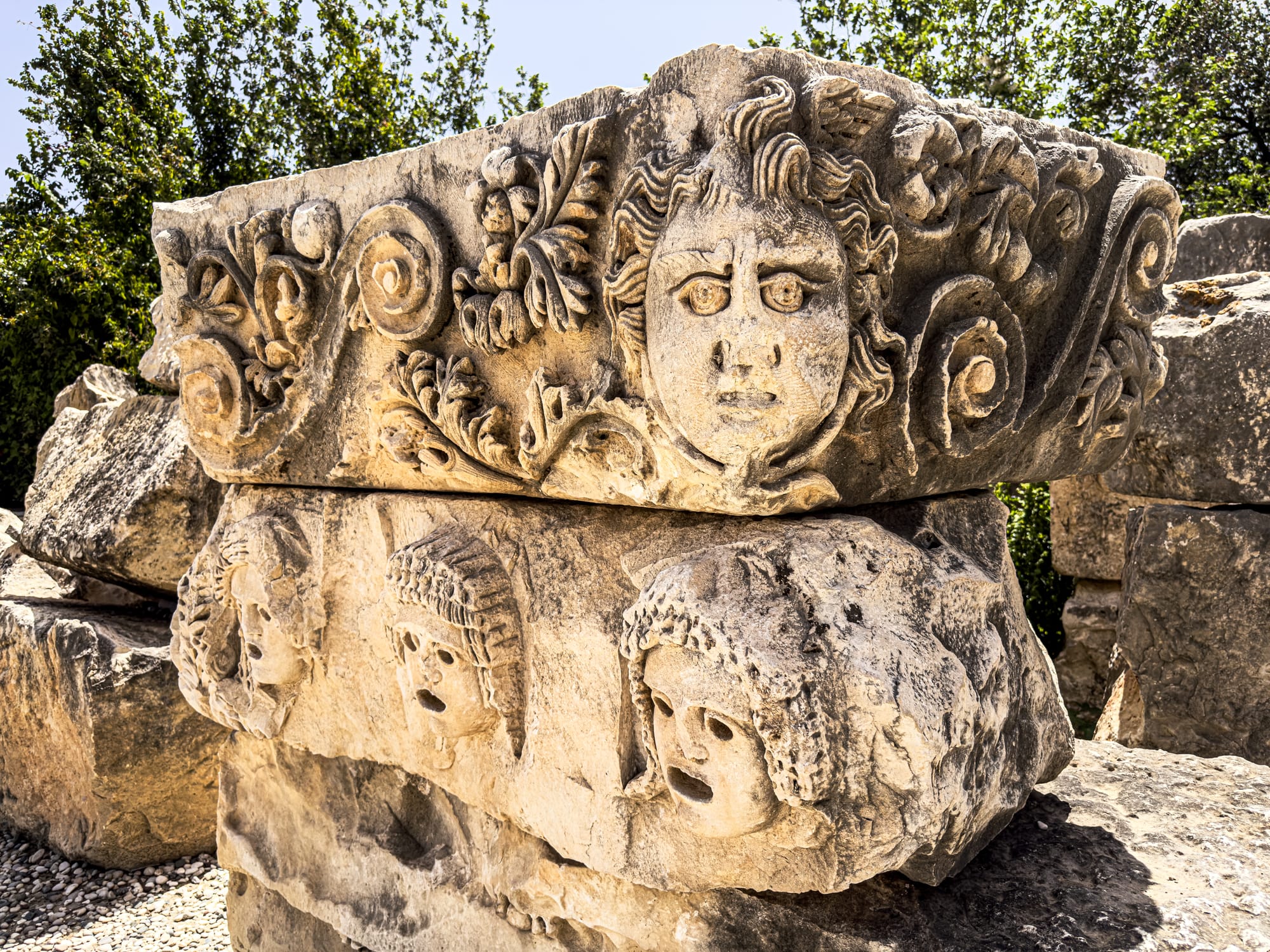
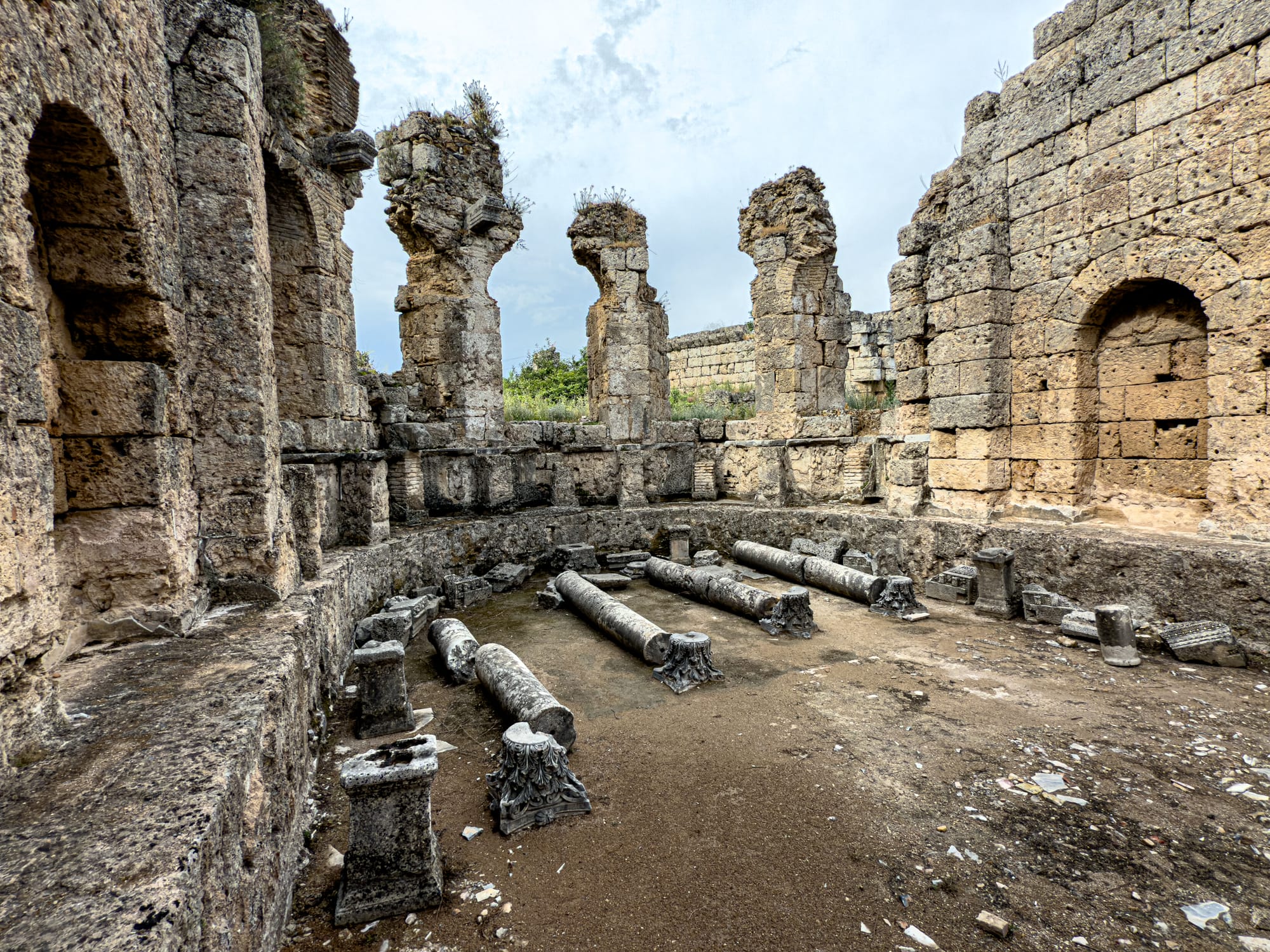
What makes Antalya distinct from other nomad hubs isn’t just affordability or sunshine—it’s access. You’re never far from something remarkable. Swim in the Mediterranean, then walk through a Roman gate to your coworking space. Hike through cedar-covered mountains, then descend to drink fresh pomegranate juice on a cliffside terrace. Everything is close. Everything feels embedded with meaning.
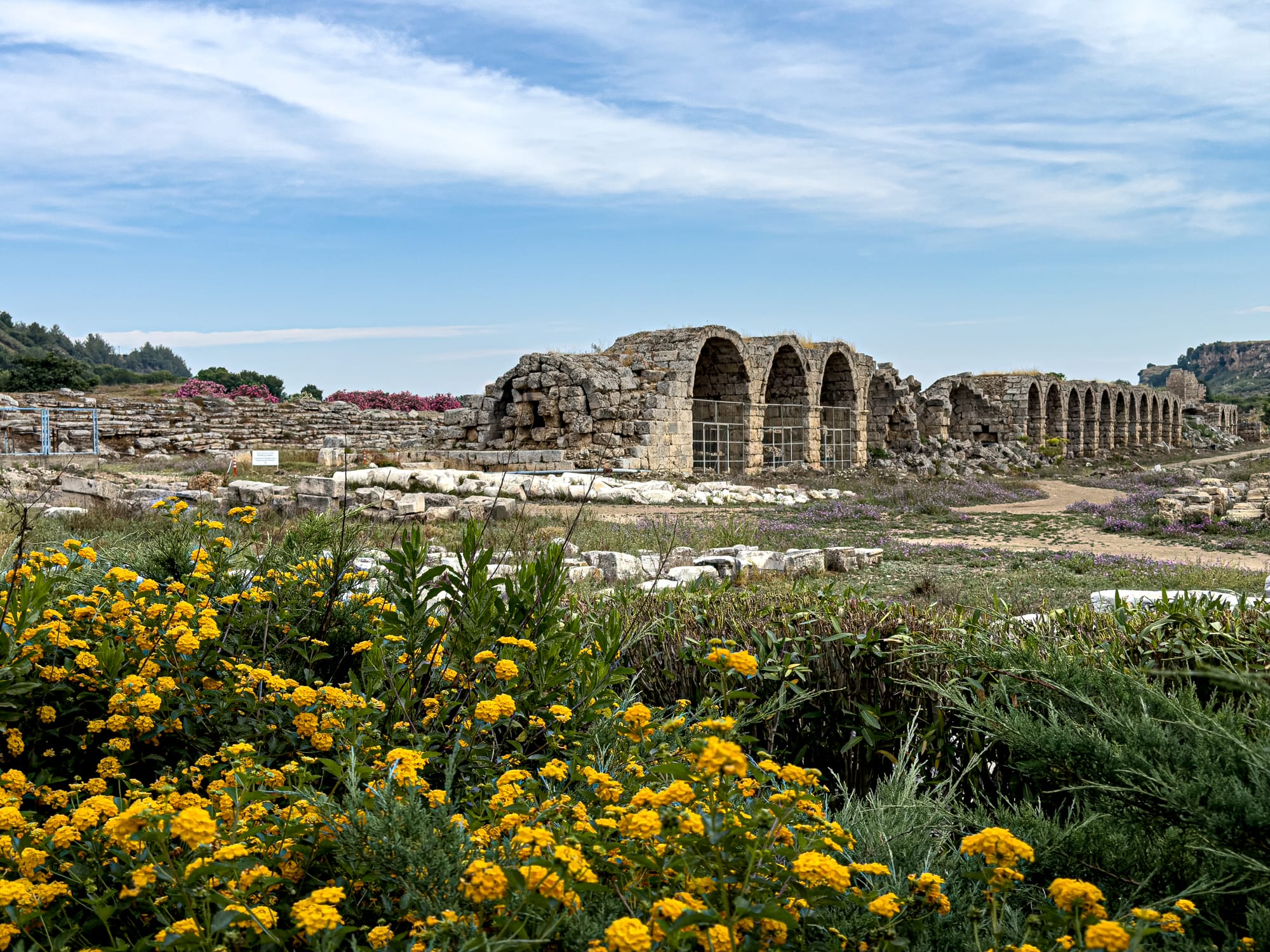
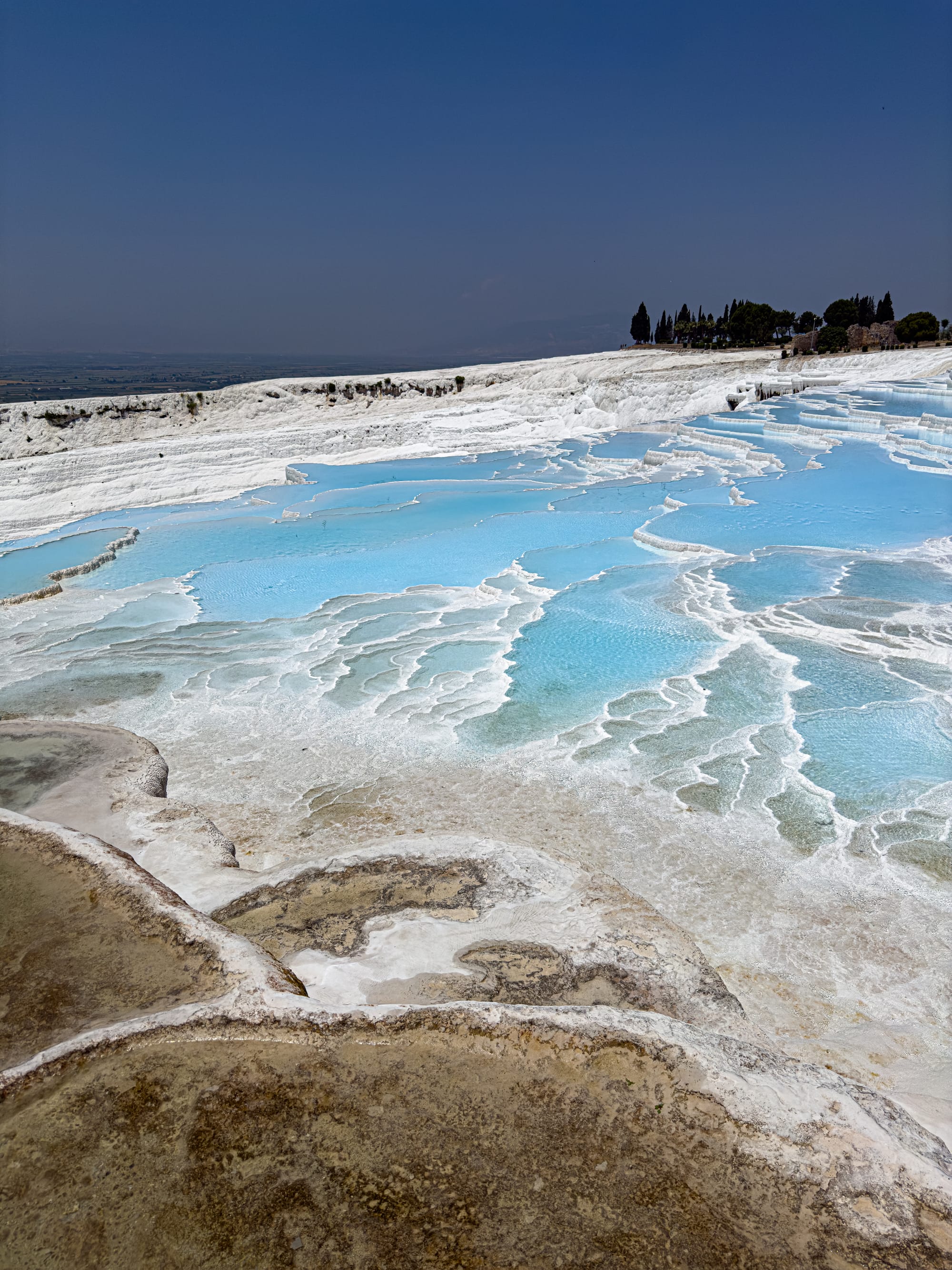
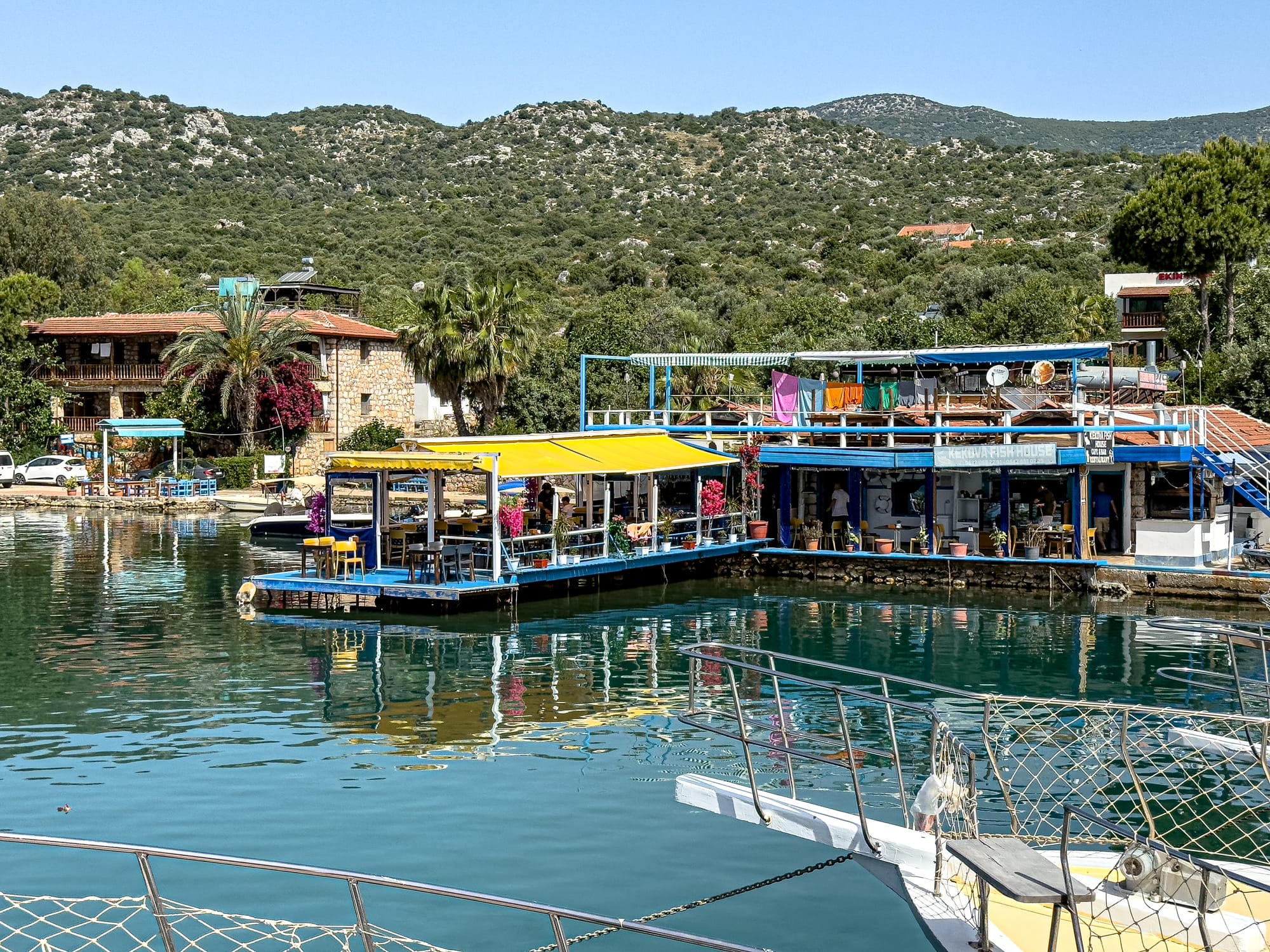
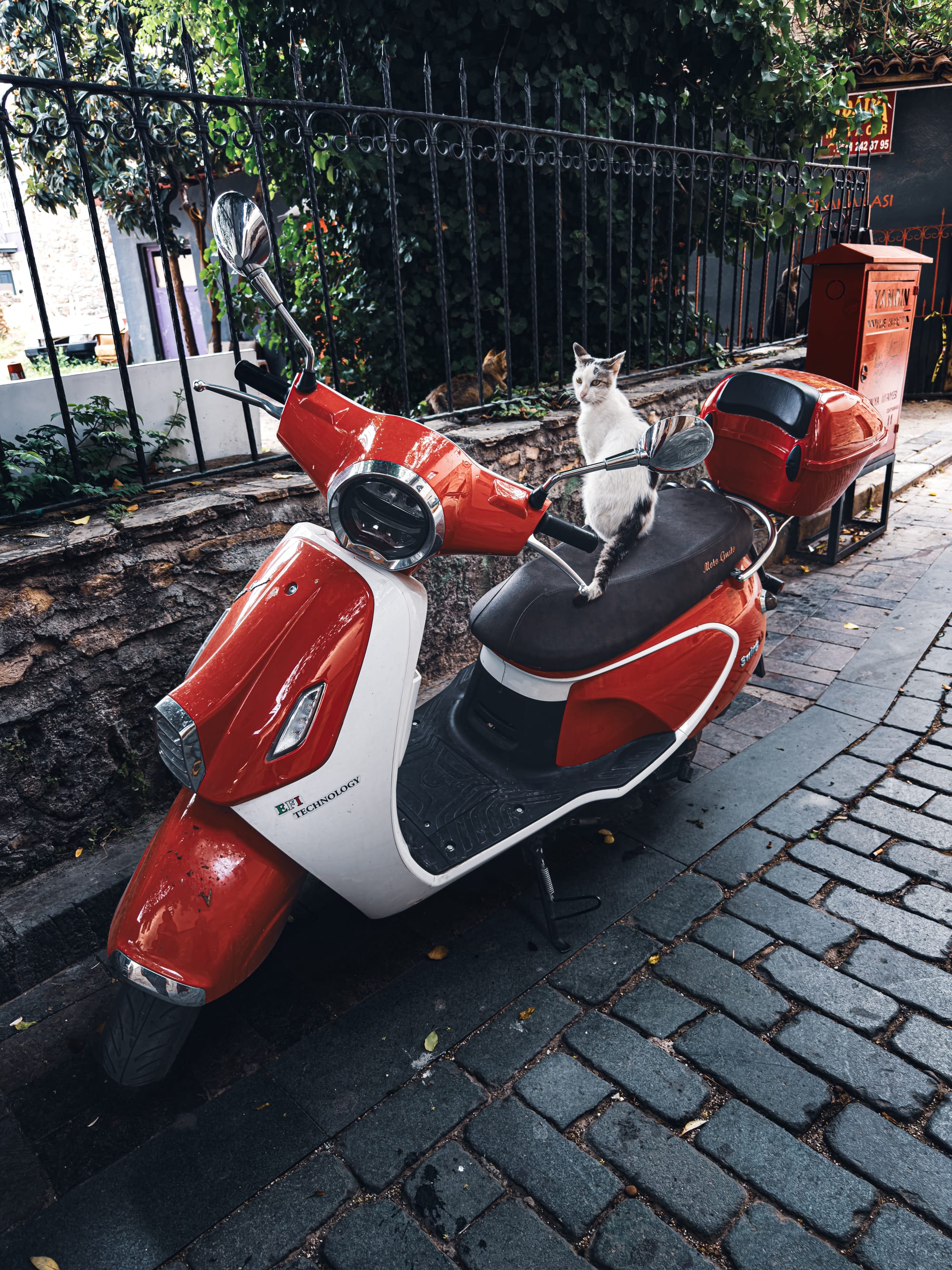
Unlike more heavily branded nomad destinations, Antalya hasn’t yet been shaped around remote work. And that’s a strength. What you get here isn’t a plug-and-play expat zone—it’s an actual city, full of locals, history, language, and change. You’ll still find all the basics—fast internet, good coffee, coworking—but you’ll also find markets, layers of time, and a chance to build slower rhythms into your workday.
The ruins are always near
In Antalya, the ancient isn’t a side trip—it’s your neighbor.
You don’t go out of your way to find ruins here. They find you. A stray column stands beside a bakery. A Roman arch frames a tourist café. An amphitheater waits just beyond the tram stop. The city is porous like that. Past and present intermingle, not as museum and observer, but as sidewalk and step.
Even the day trips from Antalya reinforce this. One weekend you’re swimming beside a sunken port in Kekova. Another, you’re hiking into the mountains to a silent amphitheater in Termessos. History isn’t cordoned off—it’s ambient. You work all week, then eat lunch beside a sarcophagus on Sunday.
This closeness to the ancient does something to your sense of time. It stretches it. You start thinking in longer arcs. The stones feel weathered but present. The places still breathe. You’re not just visiting a region—you’re sharing space with its memory.
It’s this spatial intimacy—between past and now, city and sea, ruin and rhythm—that makes Antalya distinct. You don’t just take photos of history. You pass through it on your way to buy groceries.
When to go
The best months to visit Antalya are late April through early June, with May being our personal favorite. The weather is warm but not scorching, the wildflowers are out in full force (especially around the ancient sites), and the sea is already swimmable. If you want long golden hours, clear skies, and fewer crowds, this is your sweet spot.
July and August are peak summer—hot, busy, and buzzing. Expect 35°C+ days, packed beaches, and higher prices. It’s still beautiful, especially for beach lovers and night owls, but be ready for intense sun and busy tour schedules. Swim shoes and strong sunscreen are essential.
September is a great under-the-radar pick. The sea is still warm, the heat mellows out, and the crowds begin to thin. It’s ideal for balancing historical explorations with lazy beach afternoons. You can often get better deals on accommodation and tours during this time too.
October brings cooler breezes, softer sunsets, and more space at popular sites. It’s still very walkable and swim-friendly, especially in the first half of the month. Many nomads find this to be the best balance between vibe and comfort.
November through March is Antalya’s true off-season. While the Old Town remains charming and the weather milder than most of Europe, you’ll see more rain and grey skies. Some day trips may be less frequent, and beach clubs shut down for the season. Still, if you’re here to work deeply, enjoy cooler hikes, and avoid crowds, this can be a peaceful and productive time to stay.
Our advice on the best time to be in Antalya
If you’re coming to work remotely and explore on weekends, we recommend April–June or mid-September to early November. You’ll get long sunny days, swim-friendly sea temperatures, and a calmer atmosphere in both coworking and tourist spots.
If you’re here mostly to swim and lounge by the sea, July and August deliver peak beach weather—but also higher prices and bigger crowds. If you can handle the heat (or work inside during the hottest hours), it can still be a good time.
If you’re into ancient cities, hiking, or photography, October and early spring offer moodier skies, quiet ruins, and rich colors in the mountains.
If you’re looking for low season stillness, December–March is your window. It’s cooler and rainier, but many restaurants and coworking spaces stay open, and the cliffside views are still beautiful—just with more layers.
No matter when you go, bring swimwear and sunscreen, even in winter. The sun shows up more than you think.
Getting to and from Antalya
Antalya has a major international airport (AYT) with direct flights from cities across Europe, the Middle East, and occasionally North America during high season. If you’re already in Turkey, frequent domestic flights connect Antalya with Istanbul, Izmir, and Ankara, usually for under $50.
From the airport, it’s a 25-minute taxi ride or 35–45 minutes by tram into the Old Town (Kaleiçi), where most digital nomads stay.
If you’re traveling slowly through the region, you can reach Antalya by intercity bus from other coastal hubs like Kas, Fethiye, or Alanya—comfortable, affordable, and usually with wifi onboard.
For digital nomads combining countries, Antalya pairs well with nearby hubs like Tbilisi, Istanbul, or even Athens, with several budget flight routes available seasonally. It also makes a great first or last stop on a longer overland route through Turkey.
A note on travel to Cyprus from Antalya
Cyprus may look temptingly close on the map—but if you’re planning to fly from Antalya to the Republic of Cyprus (the internationally recognized south), it’s not possible. All direct flights from Antalya go only to Northern Cyprus, which is under Turkish administration and not recognized by most of the world as a sovereign country. Entering Cyprus through the north is considered an unauthorized entry by the Republic of Cyprus, and doing so may result in being denied entry if you later try to cross into the south or fly home from Larnaca or Paphos. If you’re heading to southern Cyprus, route through another international hub instead. It’s one of those tricky travel details that’s easy to miss—so plan ahead.
Working remotely from Antalya
Coworking Antalya is the heart of the nomad experience here. Perched above the marina in the historic Old Town, it’s one of the most scenic coworking spaces we’ve worked from anywhere—stained glass windows, two terraces, sea views, and bougainvillea in bloom.
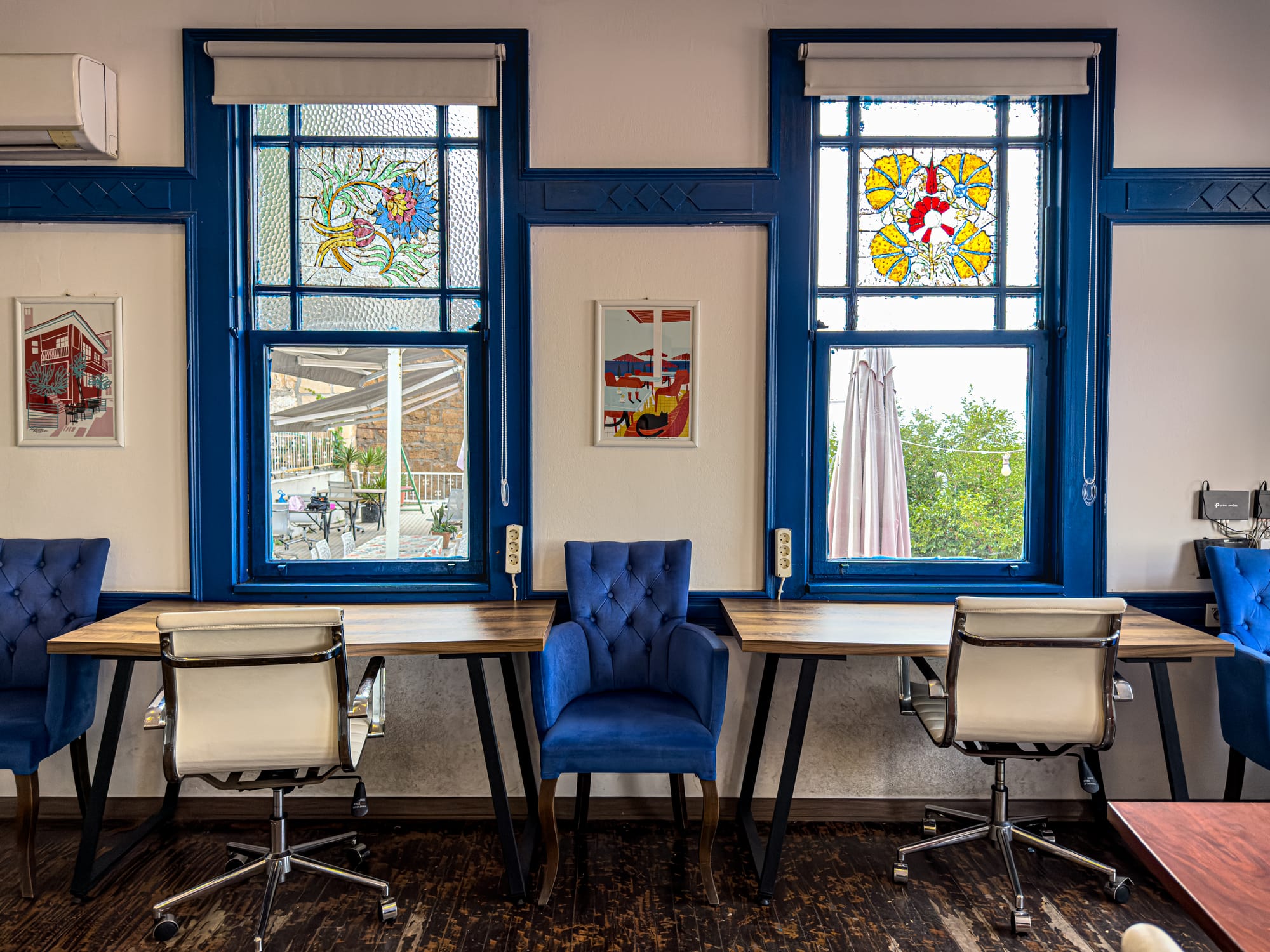
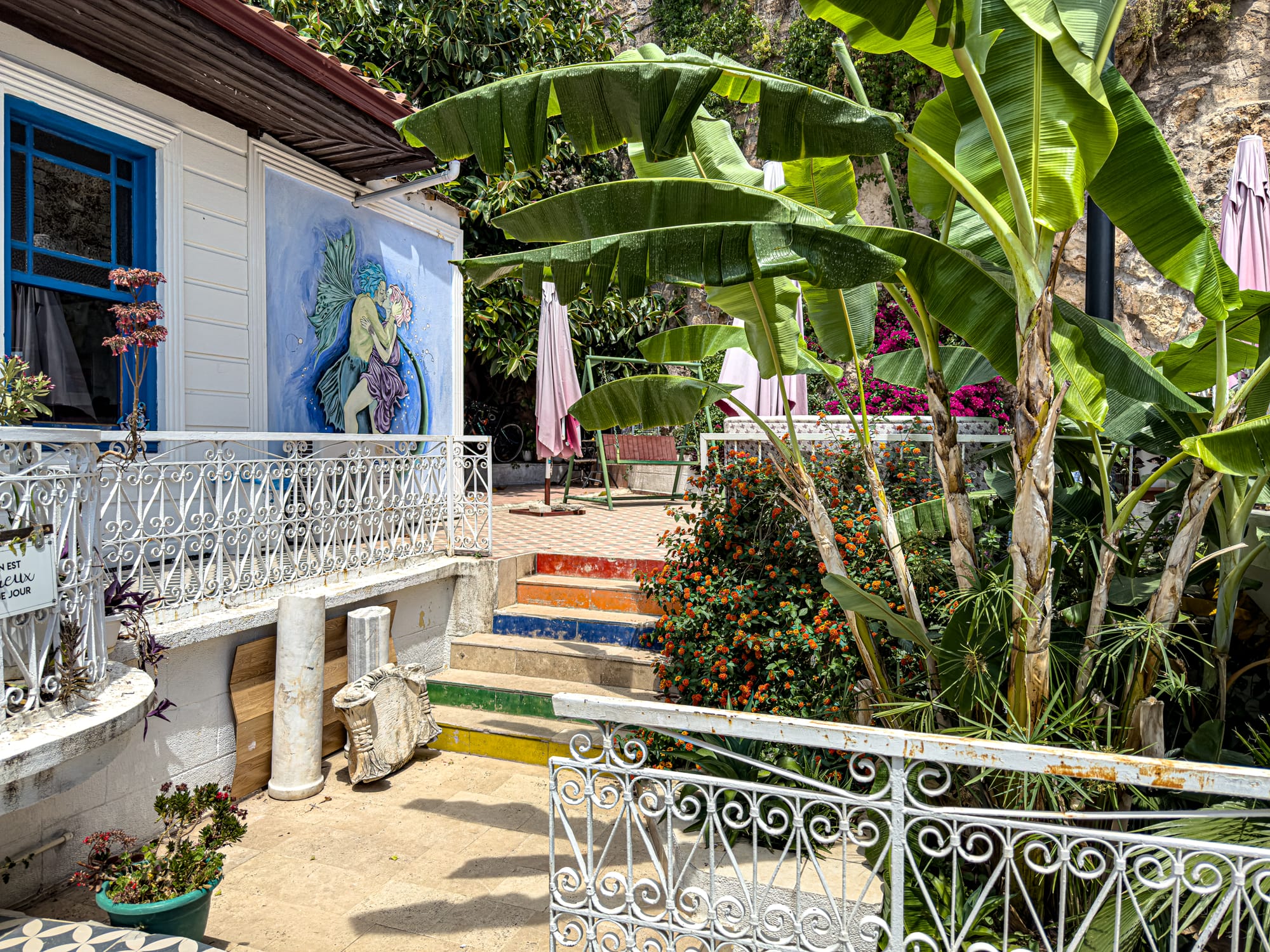
There’s strong community, regular events (ice baths, yoga, beach volleyball), and daily lunch delivery from a nearby lokanta. It’s intimate, friendly, and socially fluid. If you’re seeking deep work in a beautiful place with just enough connection, this is it.
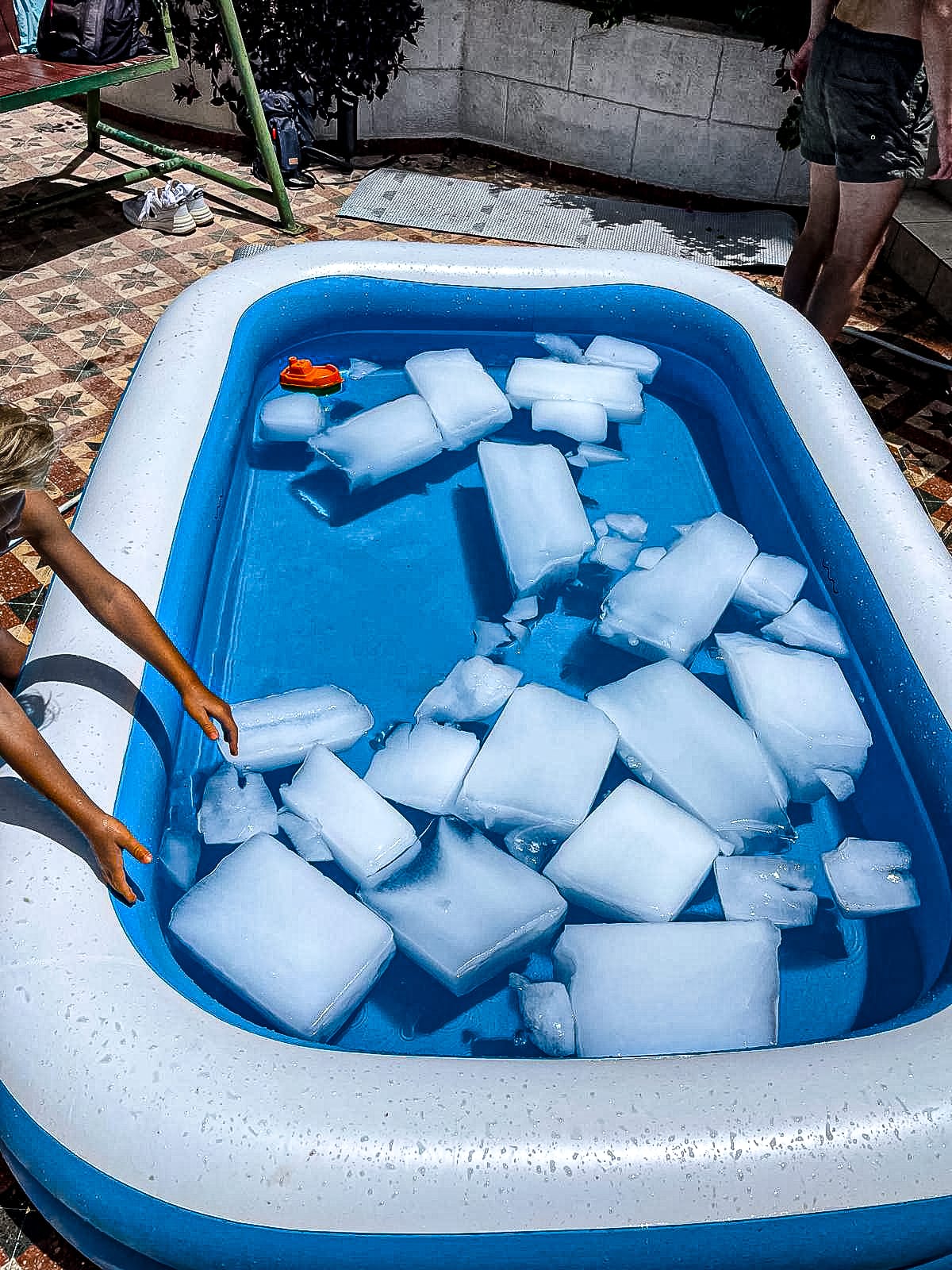
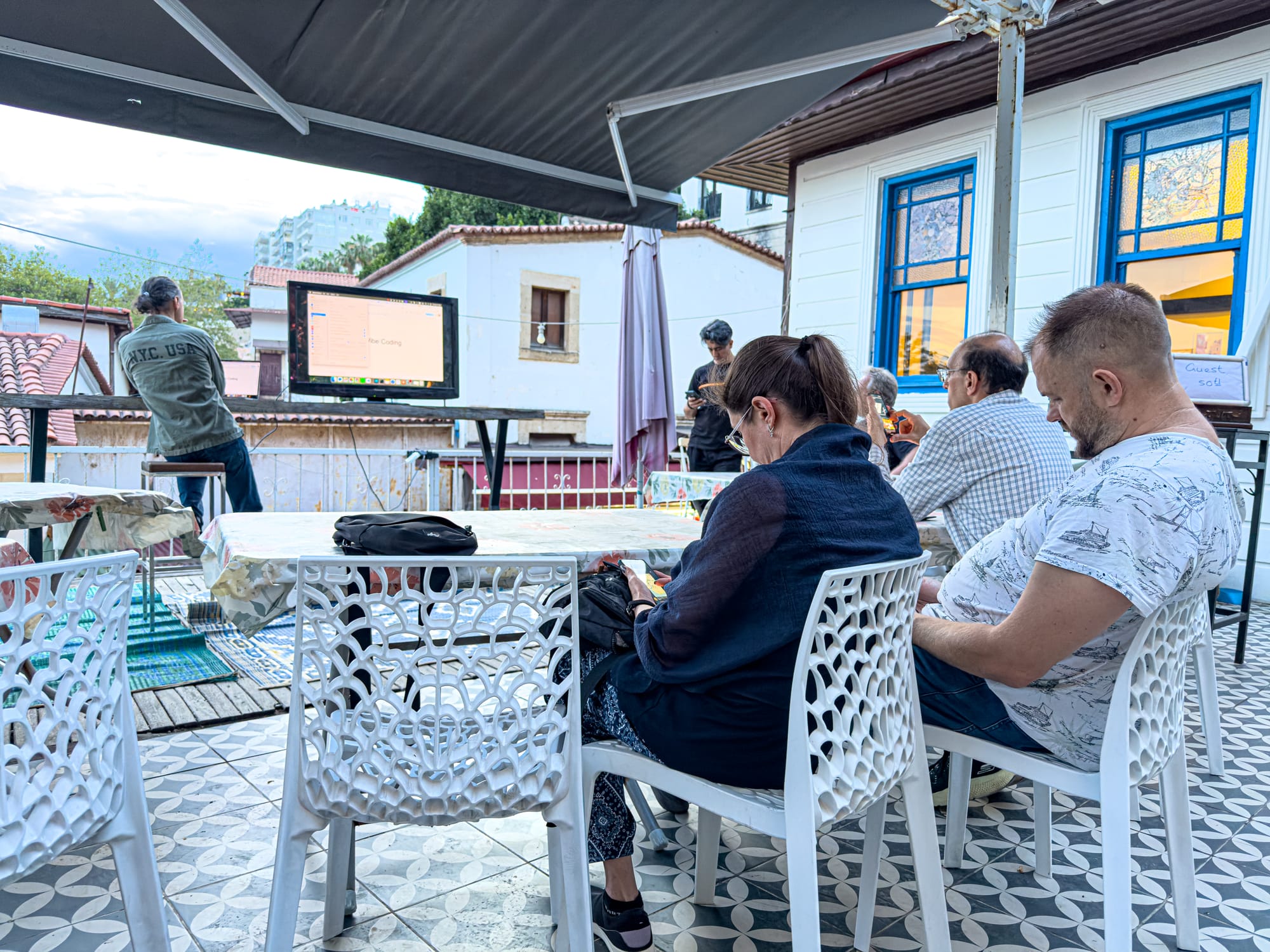
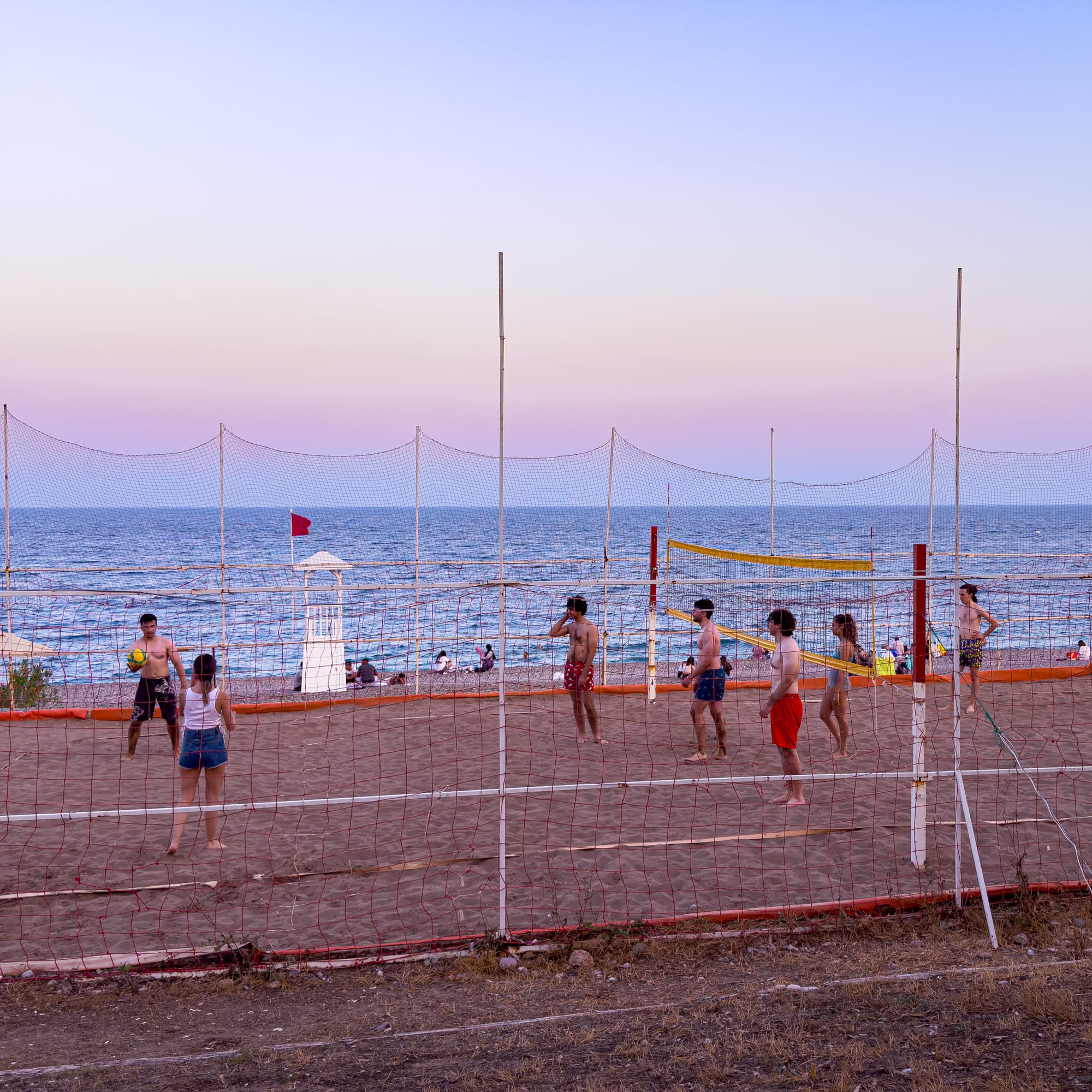
For nomads who prefer café-hopping, you’ll find a few solid spots in Old Town, but it’s not a café-coworking culture in the way that Bali or Mexico City might be. Most long-term nomads stick to coworking or home setups.
Digital nomad community
Antalya has a medium-sized, grounded, and genuinely welcoming community centered around Coworking Antalya. Tucked above the marina in the Old Town, it’s scenic, social, and just the right size to meet people without being overwhelmed. You’ll find regulars working on the sea-facing terrace, shared lunches, and a full calendar of low-key events.
What makes the community here especially unique is that it’s not just made up of foreigners. Local Turkish members—remote workers, small business owners, creatives—also join the space and its events, either as full members or through a social membership. It’s one of the few coworking communities we’ve experienced where expats and locals actually mingle, rather than orbiting in parallel bubbles. That kind of overlap adds richness: conversations stretch wider, friendships form faster, and you feel more connected to the place you’re in.
The overall vibe is calm and organically social. There’s no pressure to show up to everything, and people tend to stick around long enough that you build deeper connections. If you’re looking for flashy infrastructure or a party-heavy scene, this might not be it. But if you value real conversation, a beautiful workspace, and a cross-cultural community that feels both intentional and inviting, Antalya delivers something quietly special.
Antalyan culture
Antalya sits at the crossroads of ancient history and Mediterranean ease, shaped by both mountain and sea. Daily life is marked by small rituals—tea in tulip glasses, strolls along the marina, weekly trips to the Friday market for fresh produce, and lingering evenings with friends at a seaside café. It’s a rhythm that feels both slow and alive, rooted in community and tradition.
The Old Town offers a blend of eras: Roman walls, Ottoman houses, and cafés tucked between bougainvillea-covered courtyards. Beyond it, Antalya stretches into residential neighborhoods where you’ll find family-run bakeries, corner grocers, and open-air parks full of life. This is a city where you might hear the call to prayer echoing over a beach volleyball match or see school kids stopping for fresh-squeezed pomegranate juice after class.
Seasonal festivals and public holidays add their own rhythm—Ramadan nights in the park, Republic Day fireworks over the marina, and open-air concerts in the warmer months. In summer, locals head to the beach with friends and extended family, bringing umbrellas, fruit, and a lot of snacks. In winter, the pace softens but never disappears—markets continue, people still gather, and life carries on with a quiet steadiness.
Despite Antalya’s popularity as a tourist destination, local life is still very present. The culture is generous, proud, and hospitable—with strangers often offering help, directions, or a smile without hesitation.
Psychogeographics
What does it actually feel like to live in Antalya for a month or more? Think sun-warmed stone, citrus breezes, and sea air that slips into your lungs like punctuation. This is a city where mornings might begin with a walk through the Old Town’s winding alleys, and end with a pomegranate juice on the cliffs at sunset. Where the rhythm of your days bends around steep hills, slow lunches, and long evening light.
The sea is never far. Neither are ruins. There’s a gentle collision here between the ancient and the everyday. You might pass Roman walls on your way to coworking, or stop to greet one of the neighborhood cats lounging on a carved marble block.
Antalya isn’t still—it buzzes with market chatter, motorbike echoes, the call to prayer. The palette is terracotta and turquoise, oleander and limestone, with clouds that stack like brushstrokes over the mountains.
We wrote a full piece on the texture of life here: Between ruins and routine: digital nomad life in Antalya.
Where to stay
Antalya has no shortage of accommodation options, but if you’re here to work remotely, a few places stand out for their location, comfort, and proximity to Coworking Antalya. Whether you’re traveling solo, staying long-term, or just want a clean, quiet place to land, here are our top picks—grouped by vibe and budget.
Best for budget travelers
Coworking Antalya’s Coliving: If you’re on a tighter budget and don’t mind a shared bathroom, Coworking Antalya’s coliving is a great place to start. You’ll be right by the coworking space, making it easy to meet others and settle into a rhythm. Message Alex (the owner) on WhatsApp for availability and rates.
Best for comfort & quiet
Antalya D&D Garden: Clean lines, calming rooms, and a great location—just 15 minutes from coworking. D&D Garden has consistently solid wifi, aircon, and a quiet vibe that makes it ideal for deep work.
Antalya D&D Terrace: The sister property to D&D Garden, this one is just as quiet and restful. Both offer peaceful, minimalist rooms in a central but calm neighborhood, so you can focus without feeling isolated.
Kariva Hotel: Located just outside the old town, Kariva is a lovely, low-key stay. Clean rooms, friendly staff, and a quiet garden out back make it a nice pick if you’re after a slower pace.
Best for design & wellness
Mai İnci Otel: Sleek rooms and a full spa (sauna, hammam, steam room) make Mai İnci a great mid-range choice. It’s only 8 minutes from coworking and a good option if you’re craving a little post-work self-care.
Audo Studio Hotel: Perfect for solo travelers or light packers, Audo feels well-designed without being flashy. Wifi and aircon are strong, and it’s set on a peaceful residential street just outside the old town.
Villa Italic Suites: Villa Italic strikes a great balance: clean, roomy suites with large beds, strong wifi, and a walkable location. Some rooms have kitchenettes or balconies, which makes it easy to cook or unwind at home.
Best for long stays or couples
Aether Flats No7: This apartment is ideal if you want more space and independence. It has a full kitchen, washing machine, strong wifi, and is just a short walk to both coworking and the old town. Great for couples or slow travelers.
The best things to do in Antalya
There’s no shortage of things to do in Antalya—but what stood out most to us weren’t the flashiest attractions or the most crowded beaches. It was the contrast: walking through 2,000-year-old ruins one day, swimming off a boat in turquoise water the next. It was the texture of the place—cliffside sunsets, narrow Old Town alleys, and ancient cities just a short ride away.
This list includes our personal favorites—experiences we’d genuinely return for. Some are iconic, others tucked into quieter corners. Most have full posts if you want more detail, photos, or tips. Our advice: don’t try to cram it all in. Pick the experiences that match how you like to travel, and give them the time to unfold.
Ancient cities and cultural heritage
Termessos
A mountaintop city above the noise.
Unlike many ancient sites in Turkey, Termessos is not defined by grandeur—it’s defined by solitude. Perched high in the Taurus Mountains and tucked within the bounds of a national park, this ancient Pisidian city feels more like a secret discovered mid-hike than a ruin preserved for display. Reached via a short but steady trail, the ascent weaves through pine forest and scattered sarcophagi before opening onto stone remnants half-consumed by nature.
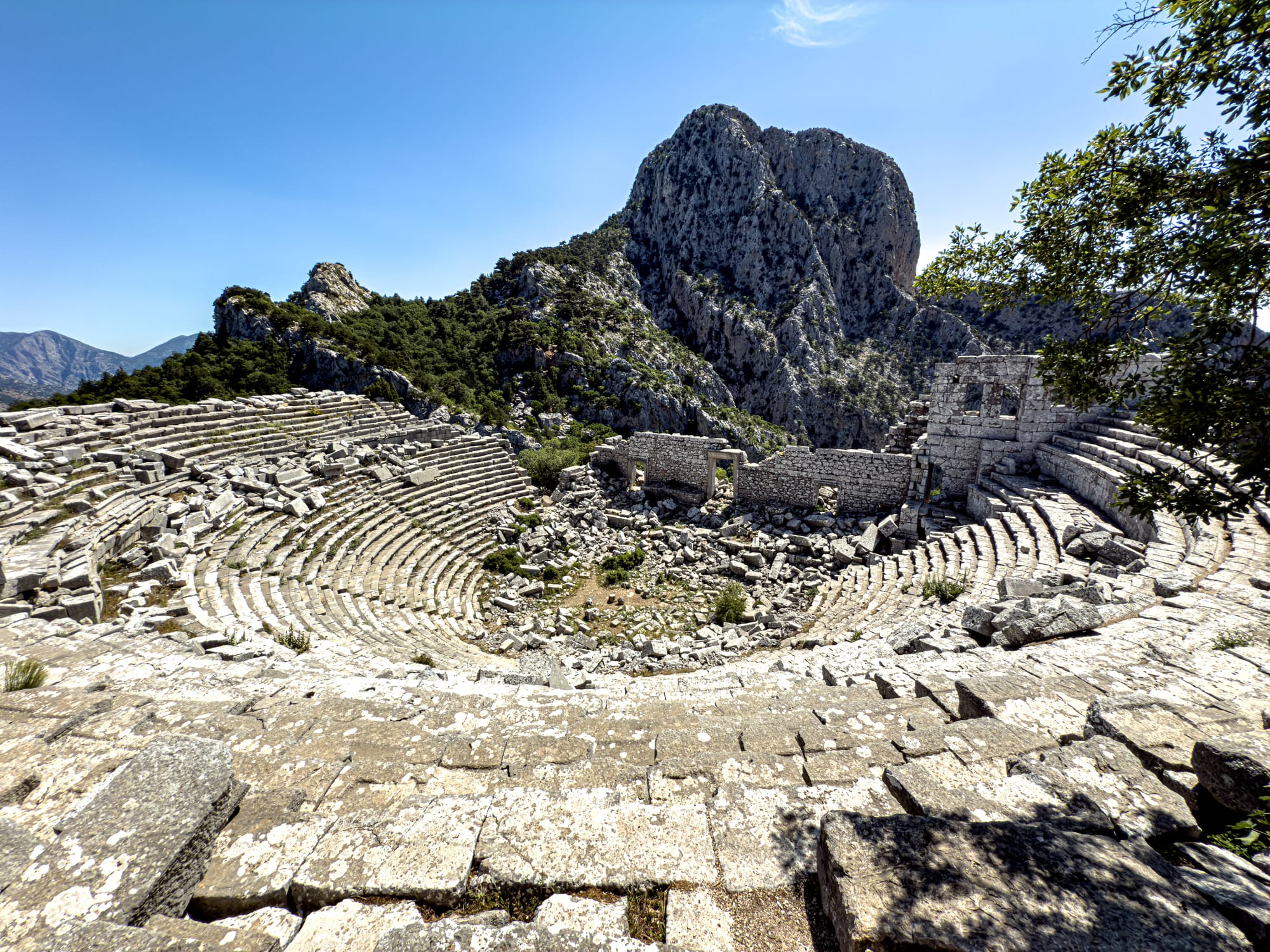
The amphitheater is Termessos’ undeniable centerpiece. Cut into the mountainside with a sweeping view of the peaks beyond, it’s among the most surreal places we’ve ever stood. There are no fences, no signs, no other voices—just wind and rock and sky. Elsewhere, you’ll find fragments of a gymnasium, baths, and temples, but the real experience is the stillness itself.
Myra
Stone faces, carved mountains, and Lycian echoes.
Myra is one of the most visually striking ancient cities in all of Turkey, thanks to its iconic rock-cut tombs carved directly into a vertical cliff face. These multistoried Lycian tombs mimic wooden houses—windowed, gabled, and dignified—even in ruin. Though their original colors have faded, the sense of presence remains: a city for the dead, watching over the living.
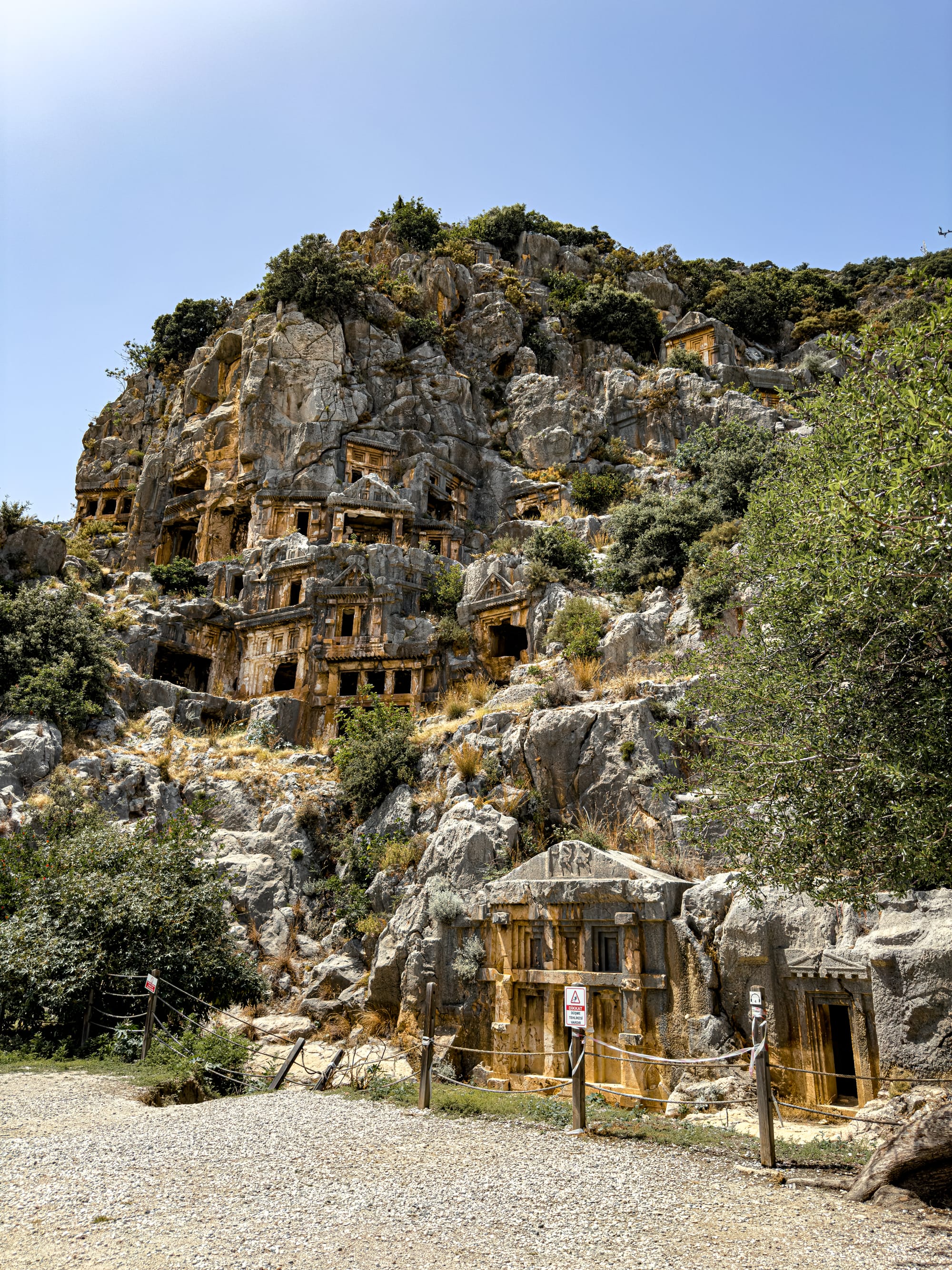
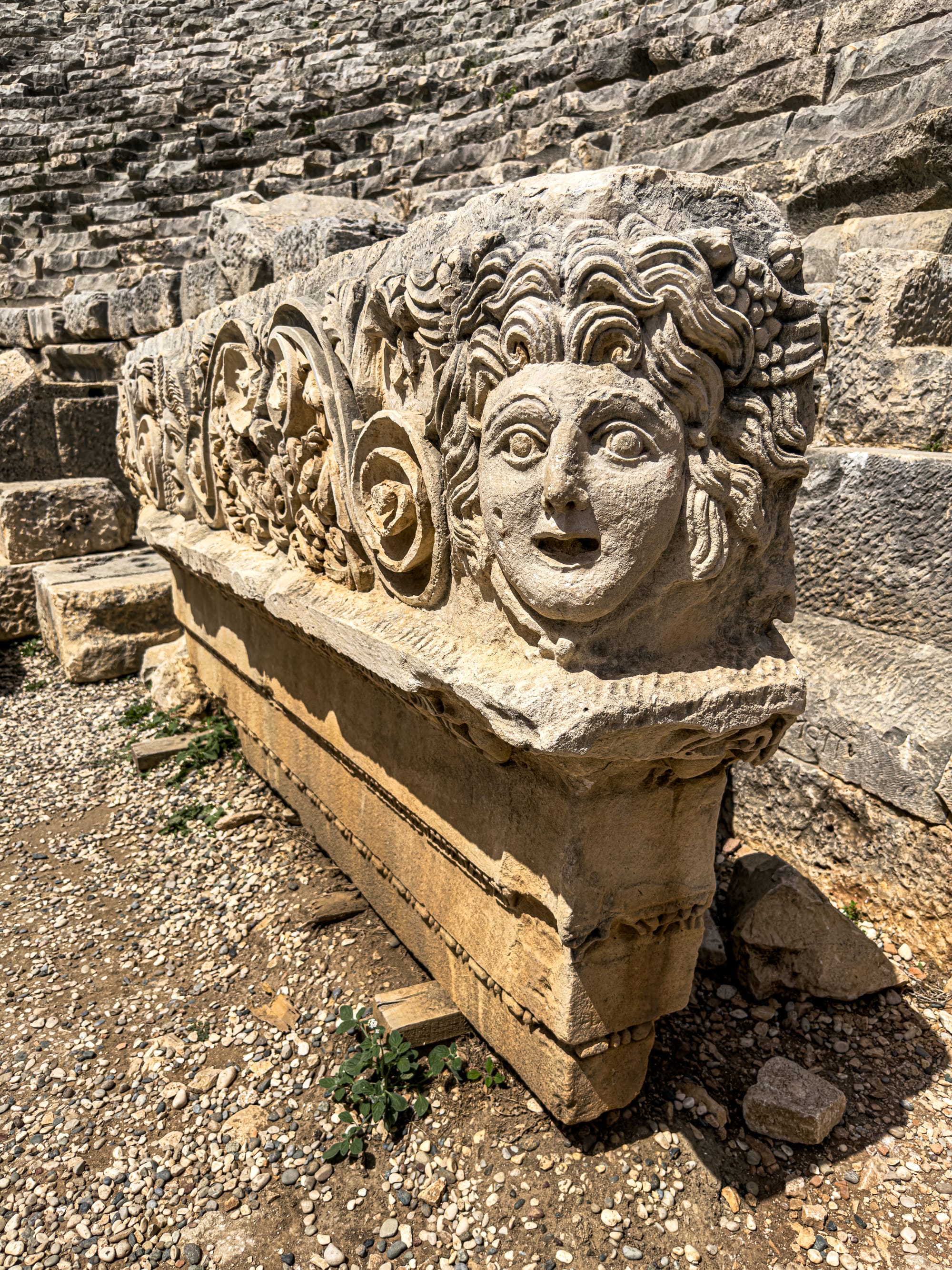
Just below, a grand Roman theater unfolds in semicircular precision, its stone seats still sturdy, its stage scattered with sculptural remnants. Among them, you’ll find expressive faces—friezes of masks with furrowed brows and exaggerated mouths that seem frozen mid-speech. It’s like walking through an open-air museum where the characters never stopped performing.
Hierapolis
Sacred ruins above the travertines.
Perched above the famous white terraces of Pamukkale, Hierapolis offers one of the most layered archaeological experiences in Turkey. Once a Roman spa city known for its healing waters, the site blends grand infrastructure with spiritual depth. Wide stone pathways lead to a remarkably preserved amphitheater, its massive stage still watching over the plains below.
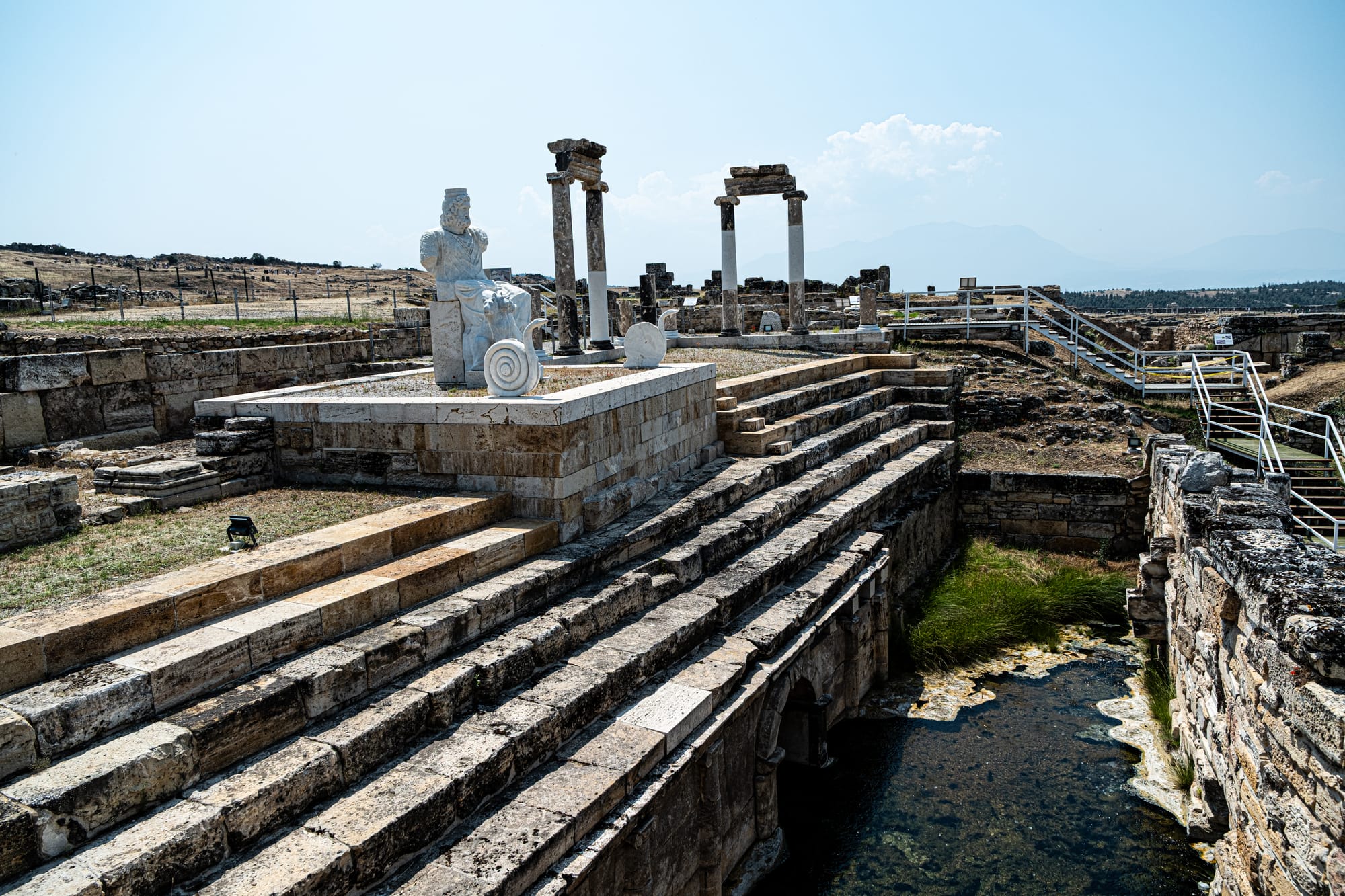
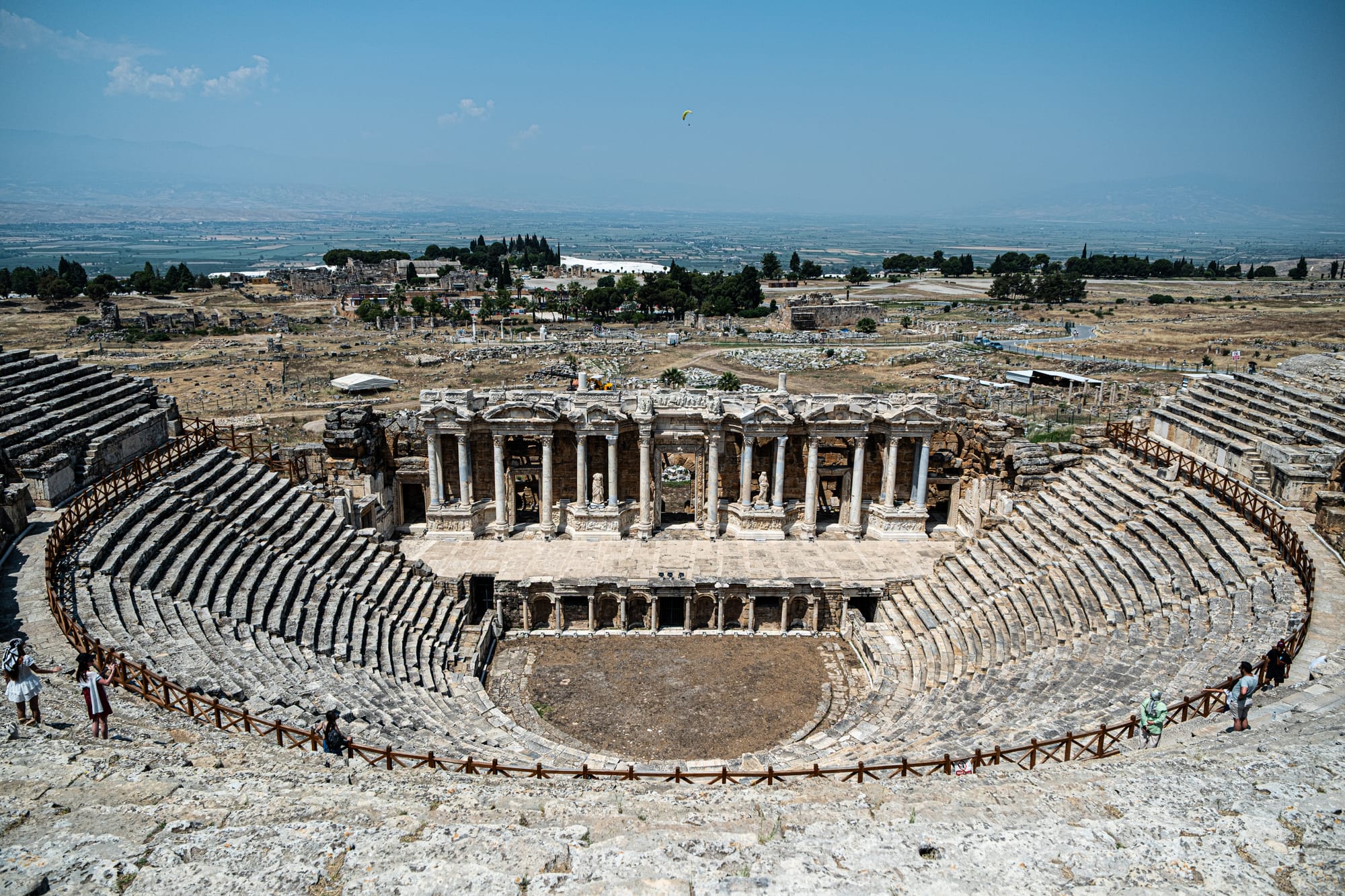
Wander further and you’ll find the necropolis—one of the largest in Anatolia—scattered with ornate sarcophagi. A small museum on site houses intricate sculptures and artifacts, including a striking relief of Asklepios, the god of healing, his serpent-wrapped staff coiled in limestone. The presence of ancient healing culture feels particularly tangible here.
Perge
Quiet majesty near the city.
Just 25 minutes from central Antalya, Perge is one of the most accessible and rewarding ancient cities in the region. Once a thriving Greco-Roman metropolis, it’s now a spacious ruin where time lingers in the silence between columns. Wide stone streets stretch beneath your feet, flanked by broken facades, old storefronts, and remnants of public baths and basilicas.
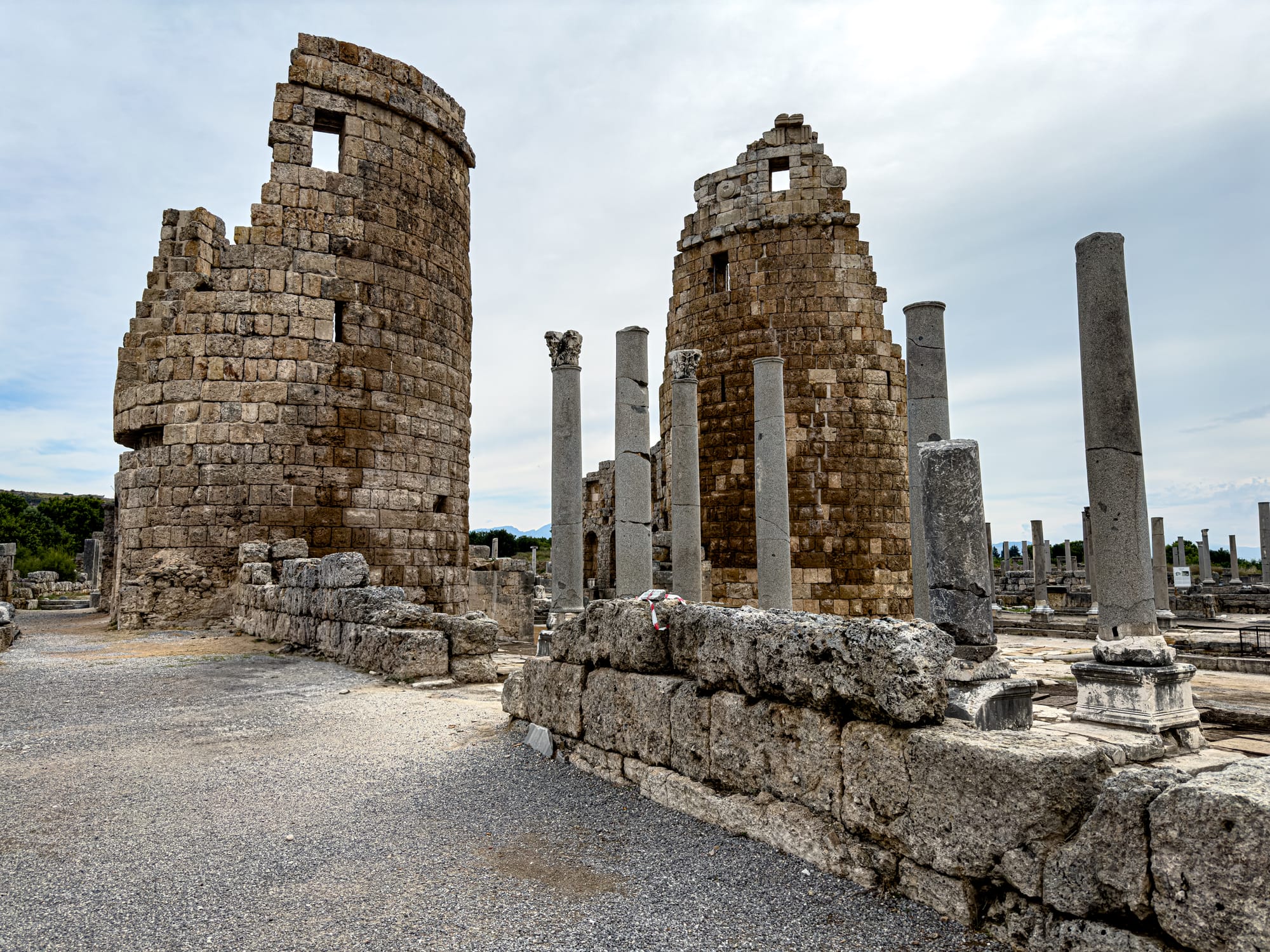
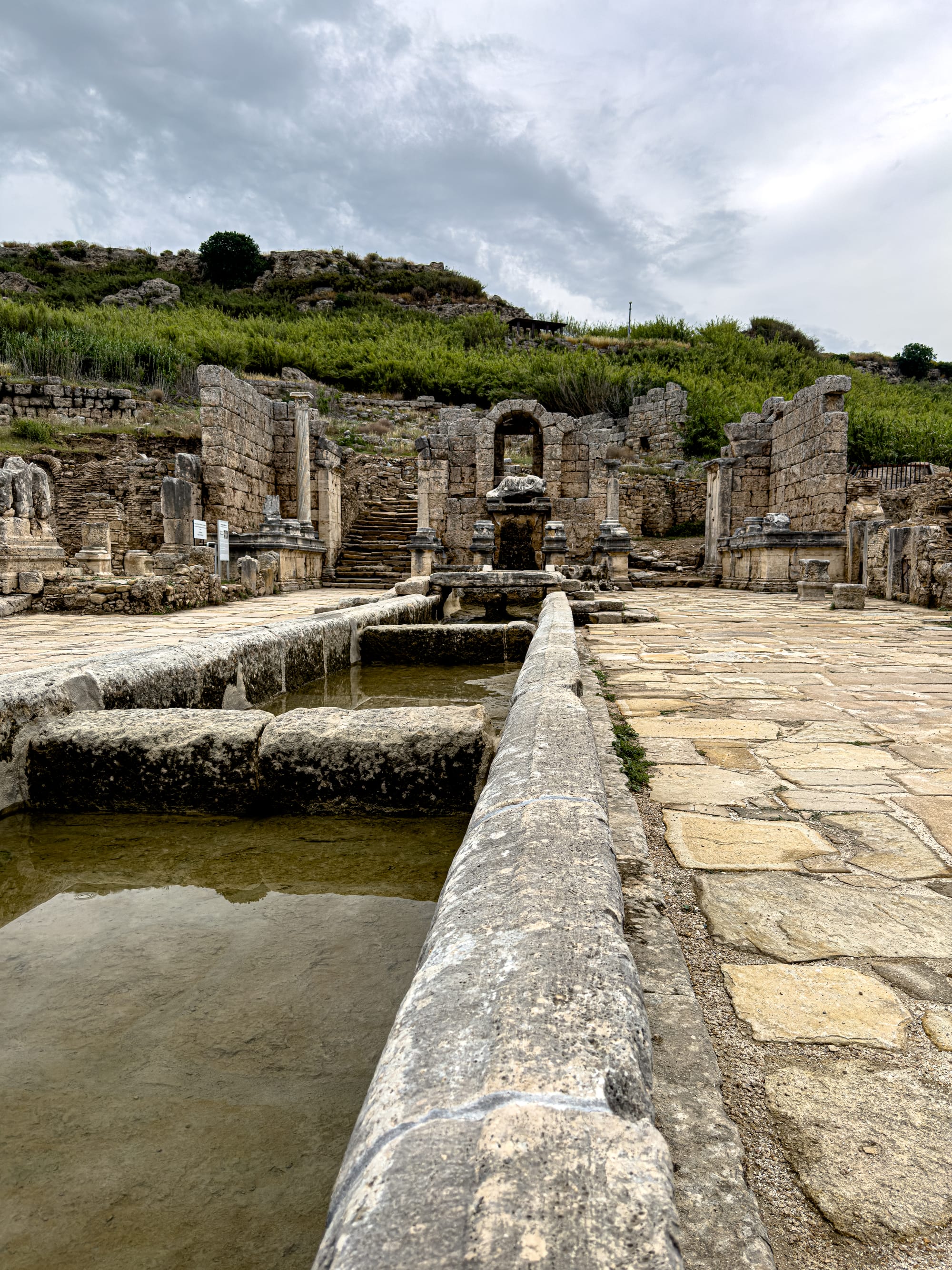
The highlight is its long colonnaded avenue, where water once flowed through a central channel. Walk uphill and you’ll pass the partially preserved stadium, and eventually the Hellenistic Gate—an elegant entrance framed by curved towers and scattered statuary. The site feels expansive but rarely crowded, offering space to wander and observe.
Kekova
The sunken city beneath the sea.
Kekova is one of the most unusual archaeological experiences in Türkiye—a Lycian city now partially submerged beneath the turquoise waters of the Mediterranean. Reached only by boat, it offers a chance to glide past half-visible ruins: staircases that descend directly into the sea, stone foundations beneath the waves, and outlines of ancient structures still clinging to the island’s edge.
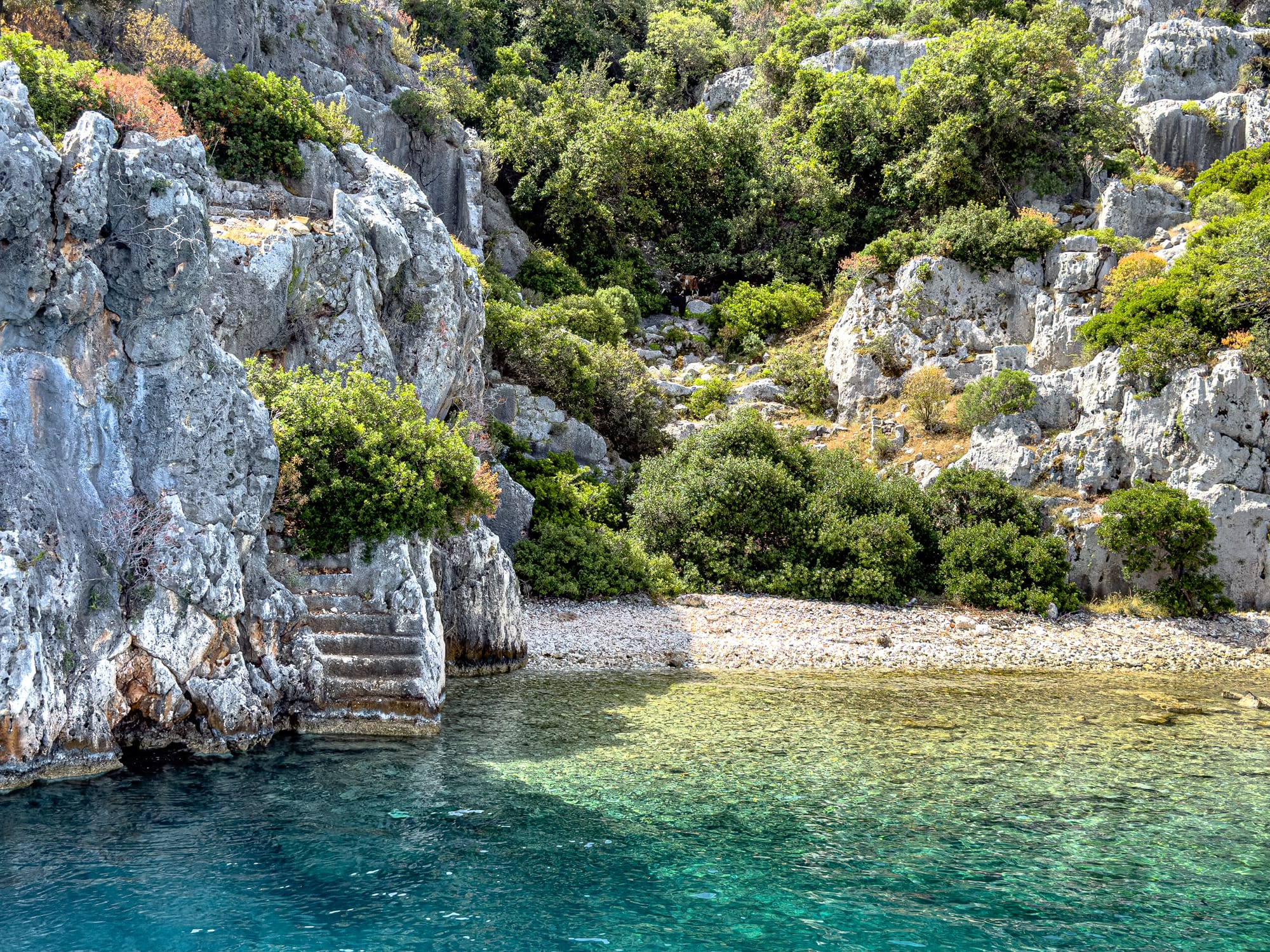
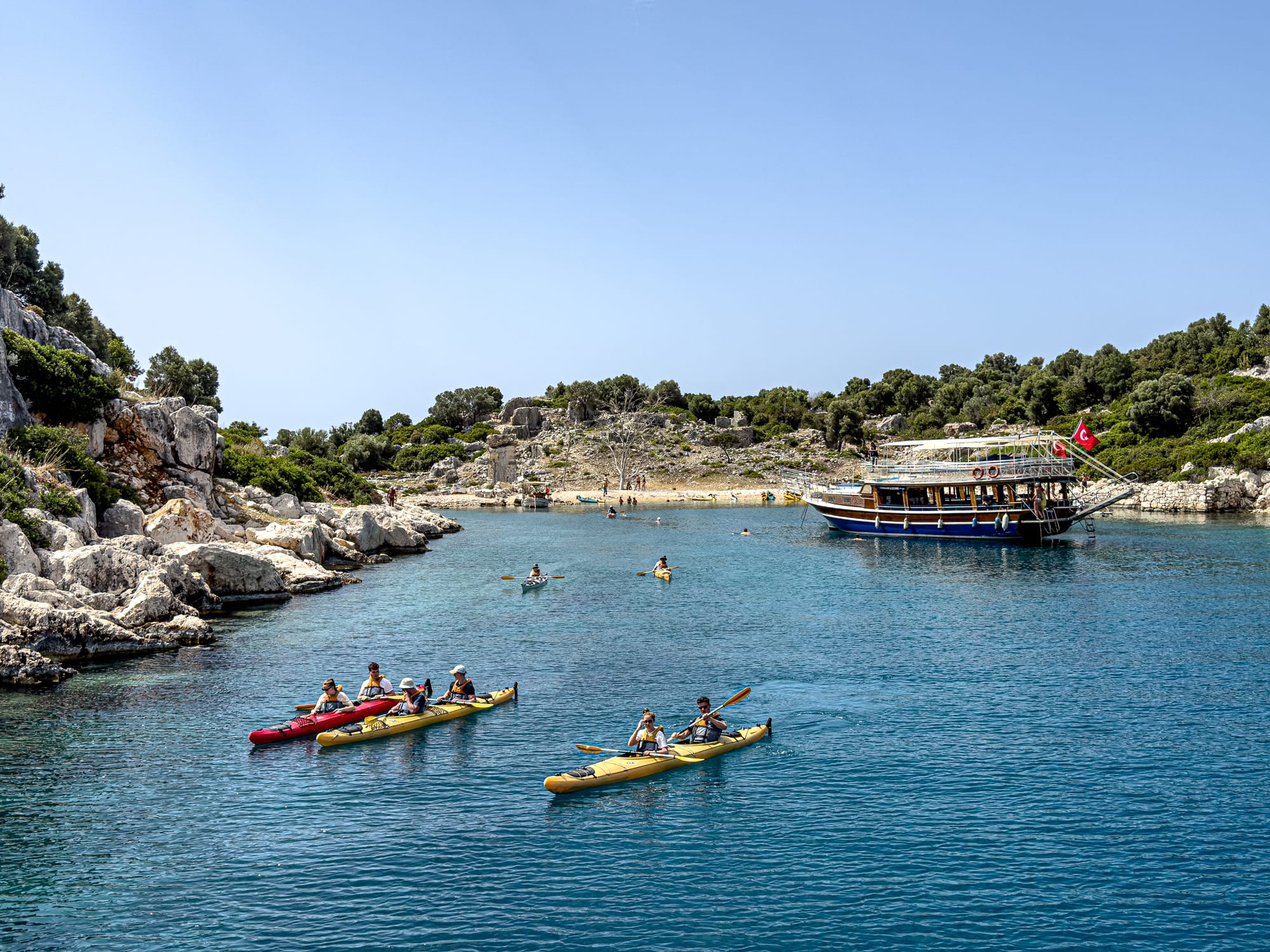
While you can’t walk on the ruins, that distance is part of the magic. From the boat’s edge or a nearby kayak, you’re floating over history—reading the shape of a once-inhabited place in water and light. Some tours will anchor in a nearby cove, letting you swim in the same bay where Lycian traders and Roman settlers once lived.
Side
Where pomegranates and empires intertwine.
Once a bustling Greco-Roman port, Side (pronounced see-day) is now a coastal mosaic of ruins and resorts, ancient temples and beach cafés. Its name is believed to come from the ancient Anatolian word for pomegranate, a fruit still abundant in the area—and a fitting symbol for a place layered with fertility, trade, and myth.
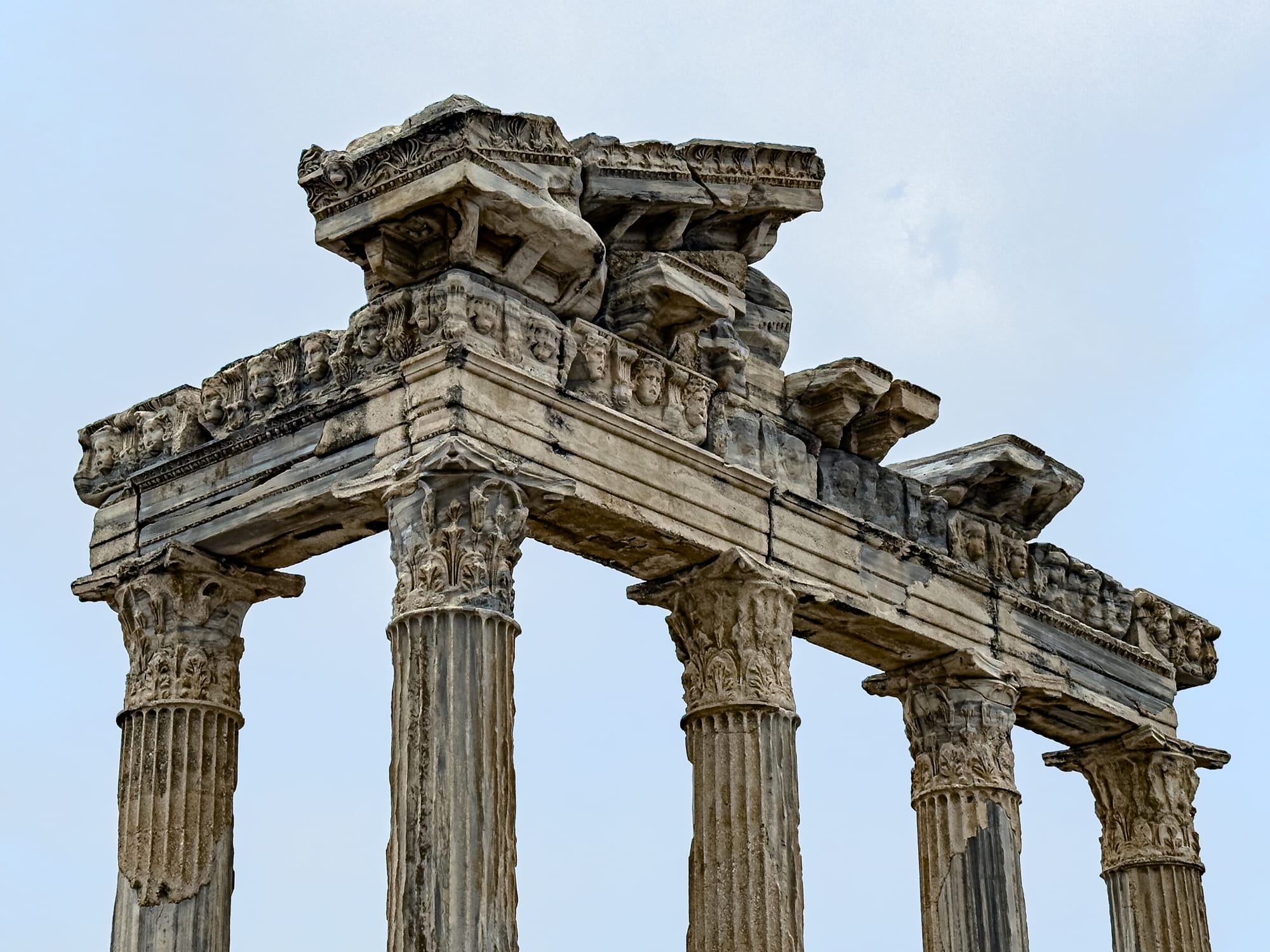
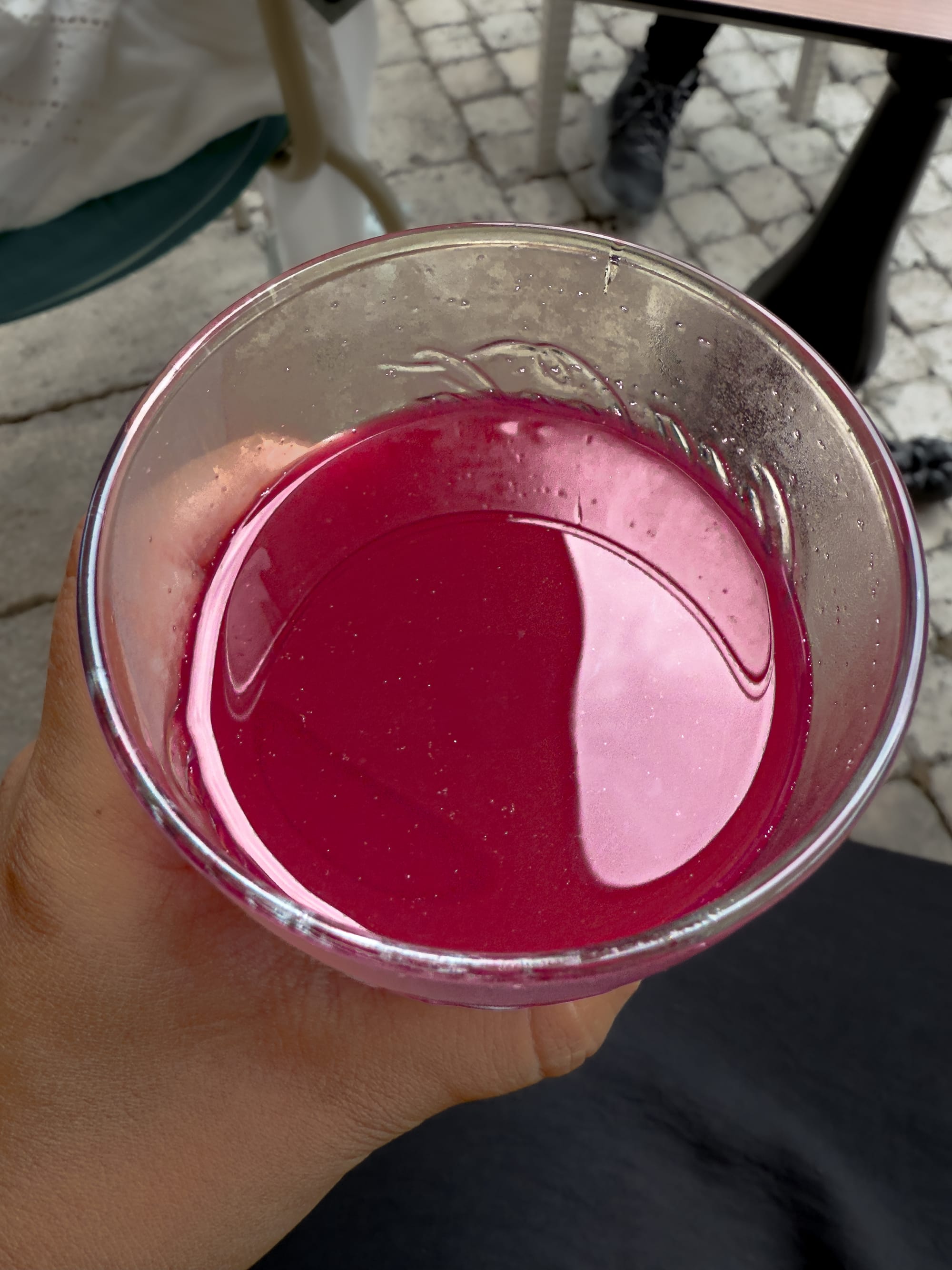
The showstopper here is the Temple of Apollo, perched at the tip of the peninsula and lit golden at sunset, its fluted columns framing the Mediterranean. But Side holds more: a vast Roman theater, a colonnaded street, a nymphaeum, and an agora—each partially reclaimed by time but still remarkably intact.
Aspendos
Echoes of empire in a perfectly preserved Roman theater.
Aspendos is best known for one thing—and it’s a masterpiece. The Roman theater here is considered one of the best-preserved in the world, with seating for 15,000 and acoustics so refined you can hear a whisper from the stage all the way at the top row. Built in the 2nd century CE during the reign of Emperor Marcus Aurelius, it remains a stunning example of Roman engineering and imperial ambition.
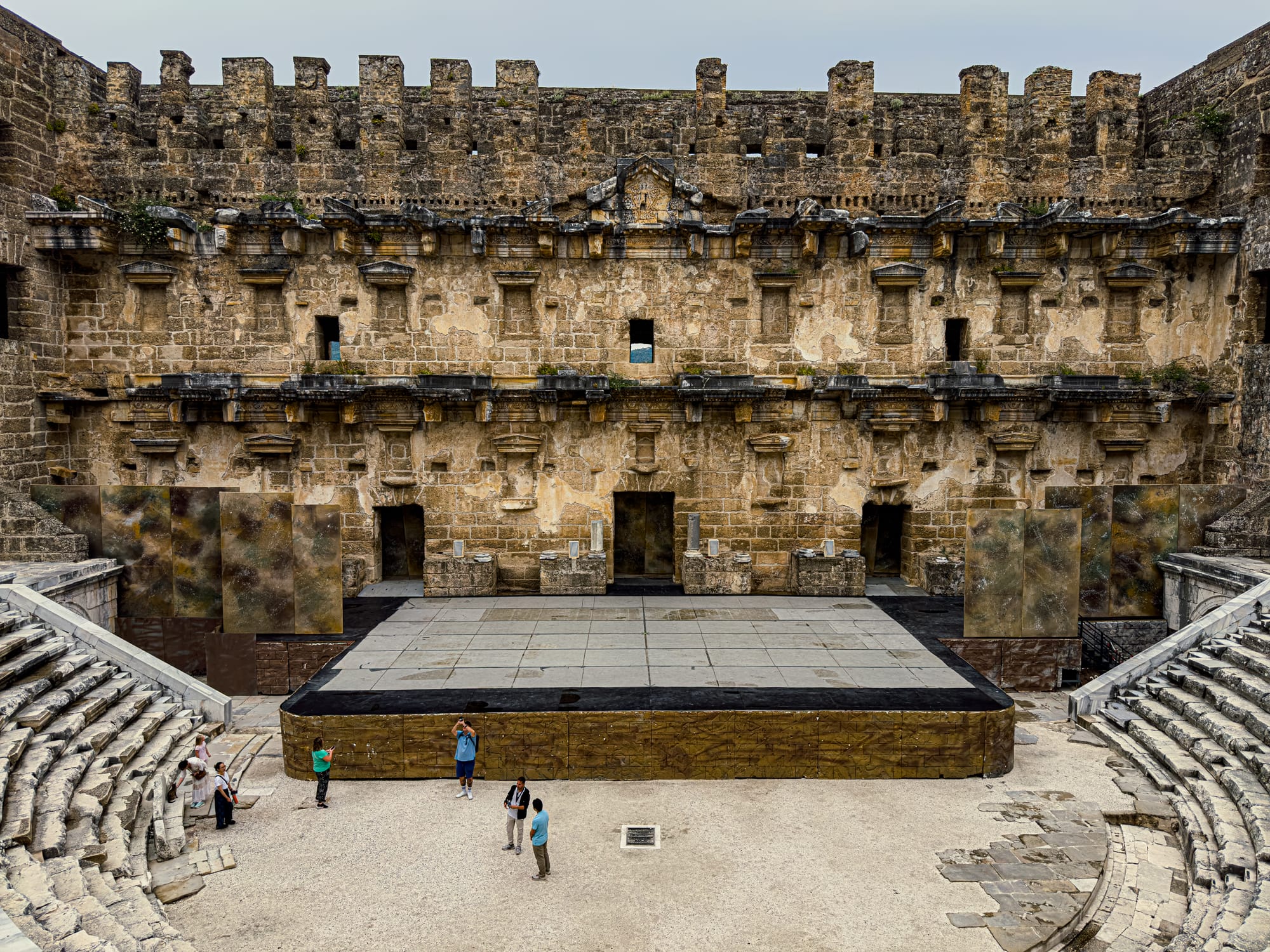
The theater is still used today for concerts and performances, including the renowned Fire of Anatolia dance show, which adds a pulse of modern spectacle to this ancient space. Though the surrounding ruins of Aspendos—like the aqueduct and basilica—are less visited, they offer a wider glimpse into the city that once thrived here as a commercial and cultural hub.
Church of St. Nicholas
Frescoes, legends, and the surprising color of a saint’s legacy.
Tucked into the town of Demre, the Church of St. Nicholas is far more vivid than you might expect. Built in the 6th century over the tomb of the real St. Nicholas—yes, the man who inspired Santa Claus—the church is a quiet but powerful site of pilgrimage, history, and layered belief.
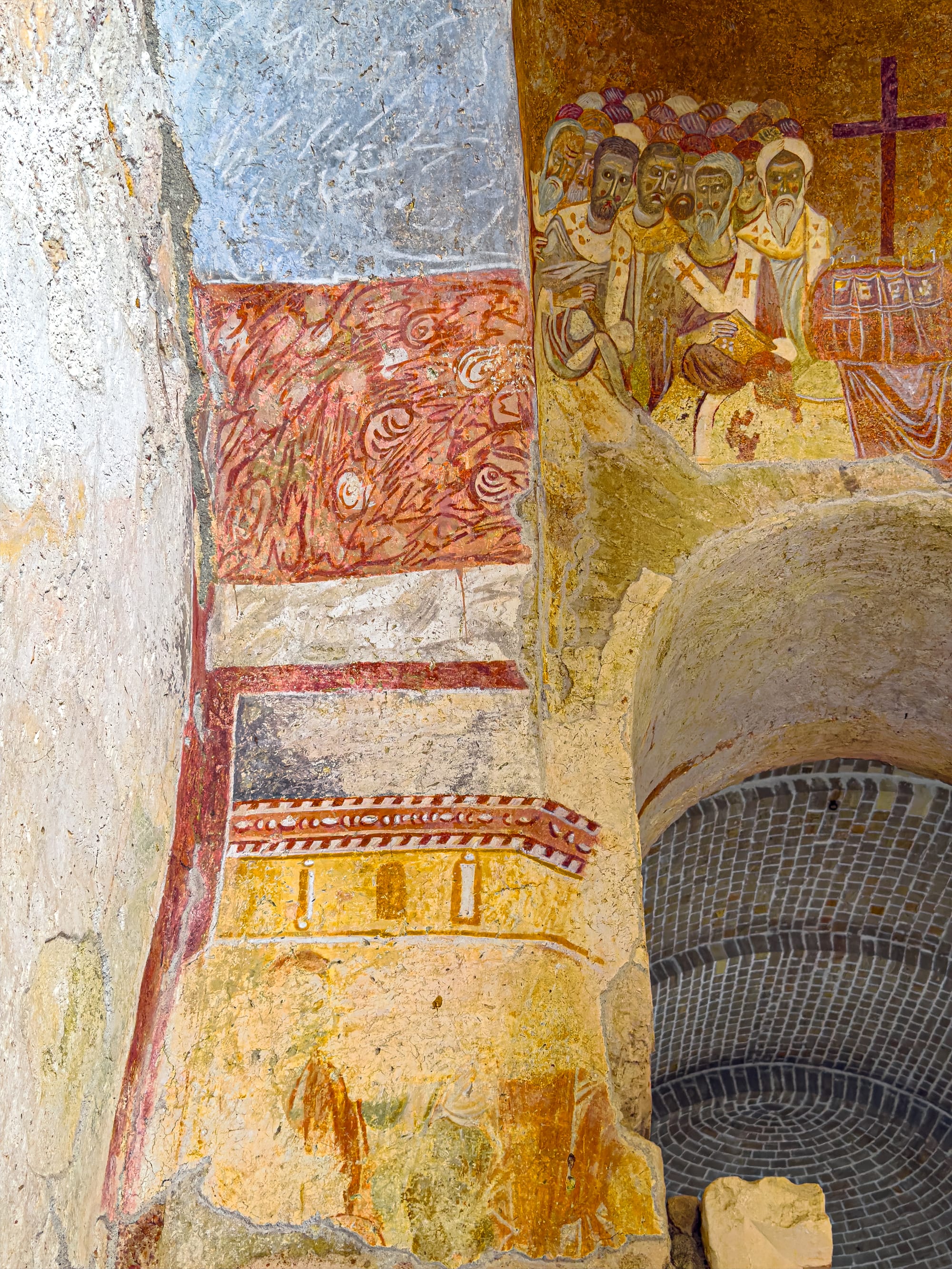
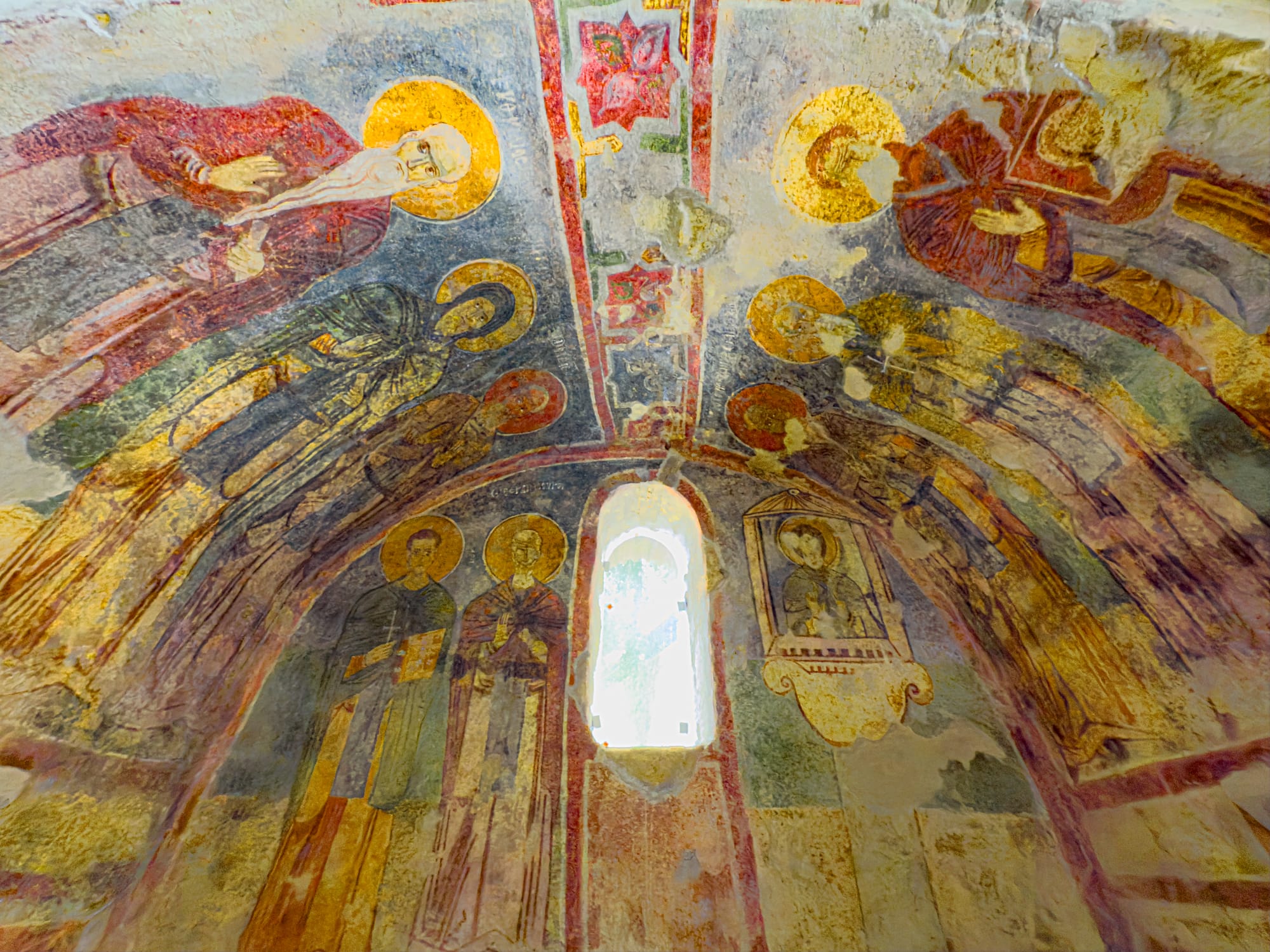
Inside, you’ll find remnants of once-glorious frescoes clinging to vaulted ceilings and worn walls. The stone is warm with age, and patches of faded red, gold, and teal still whisper Byzantine grandeur. What surprised us most was the sheer color of it all—not just the paintings, but the interplay of light and architecture, of arches and alcoves, of memory and reverence.
Natural wonders and coastal escapes
Pamukkale
Terraced pools of mineral light.
Pamukkale is one of Turkey’s most iconic natural sites—where glacial-white travertine terraces spill down the hillside like steps from another world. Formed over millennia by calcium-rich thermal waters, these terraces have hardened into surreal cascades of rock that shimmer in the sun and hold shallow pools of turquoise.
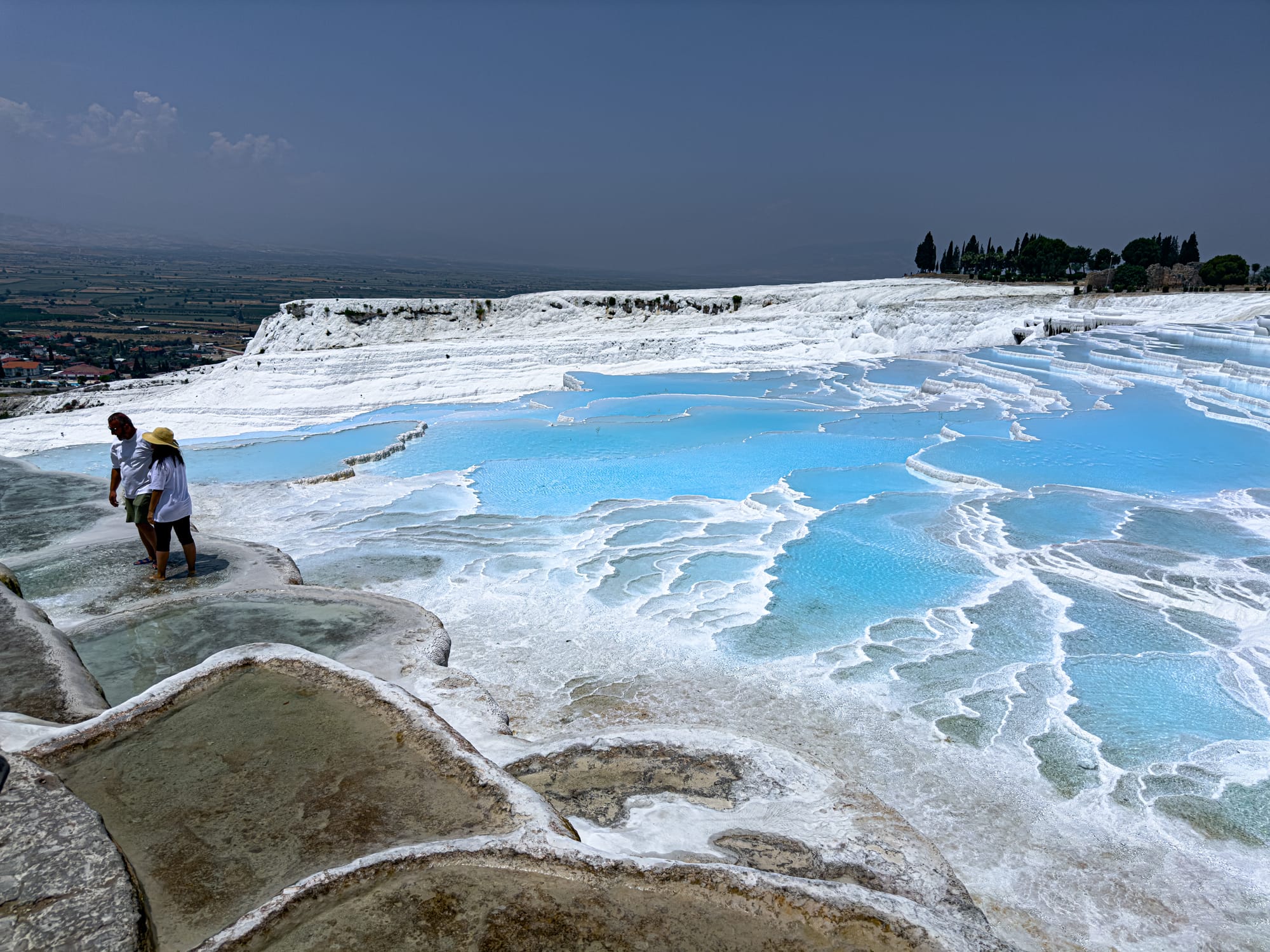
Walking barefoot across the travertines is required, and part of the magic. The ground beneath your feet feels both soft and textured, gently warm from the geothermal activity below. You can dip into the pools, sit along the ledges, and take in sweeping views of the valley below. It’s ethereal—especially in the late afternoon light.
Suluada
Turquoise water, limestone cliffs, and a boat-led escape.
Often called the “Maldives of Turkey,” Suluada is a small, uninhabited island off the coast of Adrasan that offers a full-day retreat into crystal-clear waters and sun-warmed stone. The nickname is a stretch—but the experience is still remarkable.
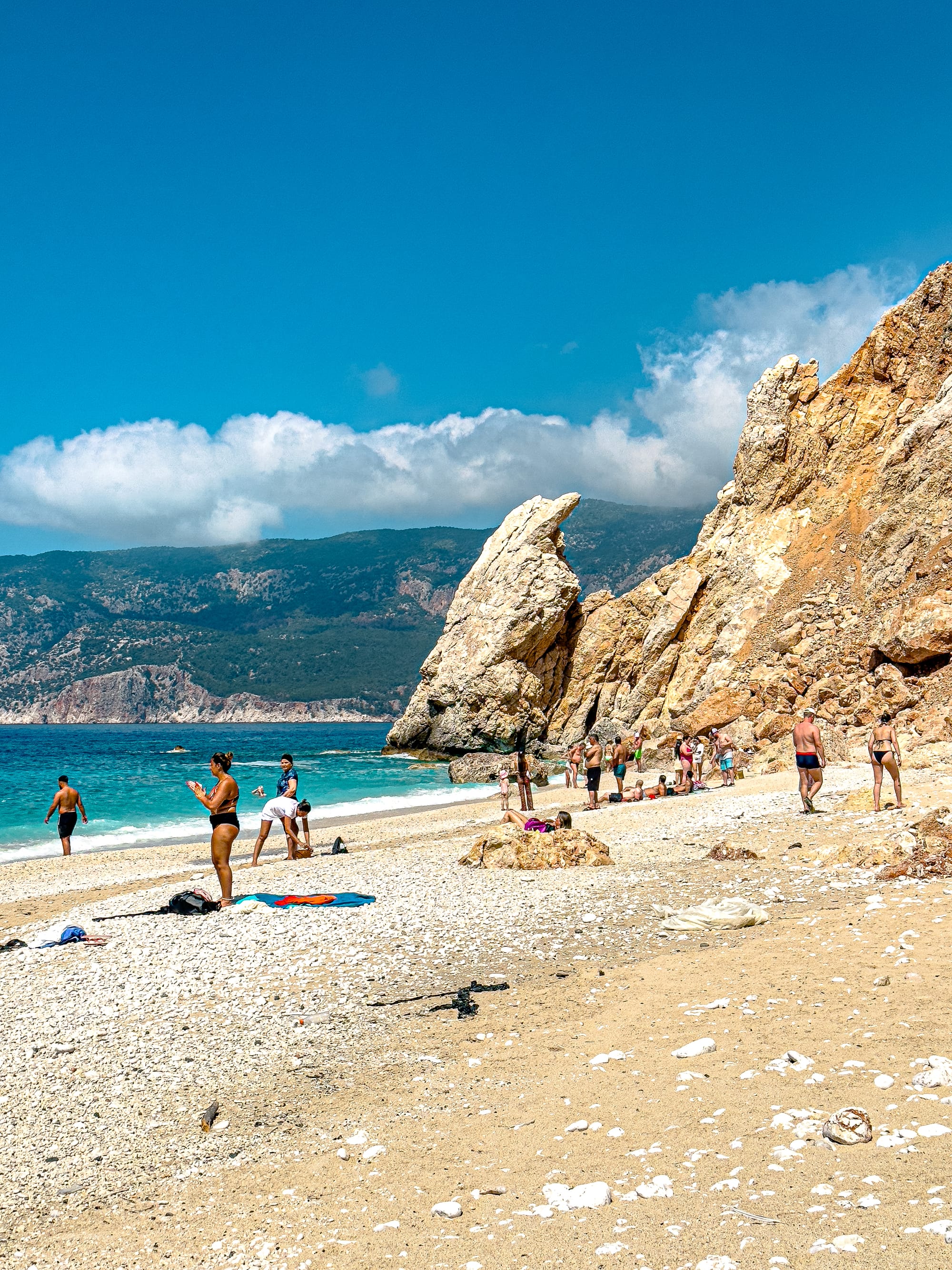
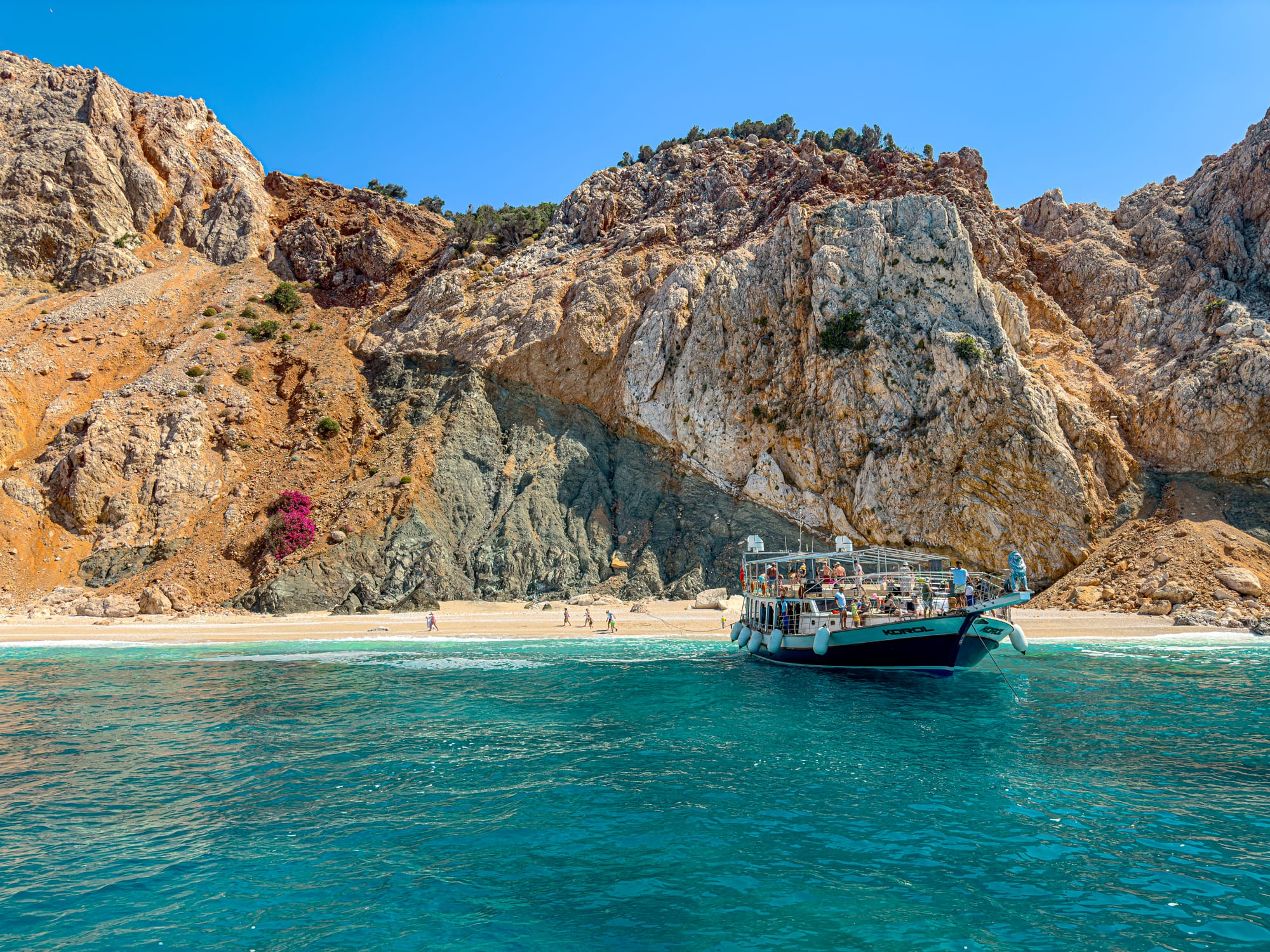
Reached by boat, Suluada’s shoreline is edged with pale pebbles and steep rock formations that drop dramatically into the sea. What makes it special isn’t luxury, but simplicity: there’s nothing built here, just an island where you can swim, sunbathe, and float in some of the clearest water on the Turkish coast.
The Green Canyon
Freshwater serenity framed by cliffs and trees.
The Green Canyon offers a slower, cooler contrast to Antalya’s coastal heat—a day spent gliding across an emerald reservoir surrounded by rugged mountains and unexpected forest. Formed by the Oymapinar Dam, this freshwater canyon carves its way through the Taurus Mountains with startling clarity and calm.
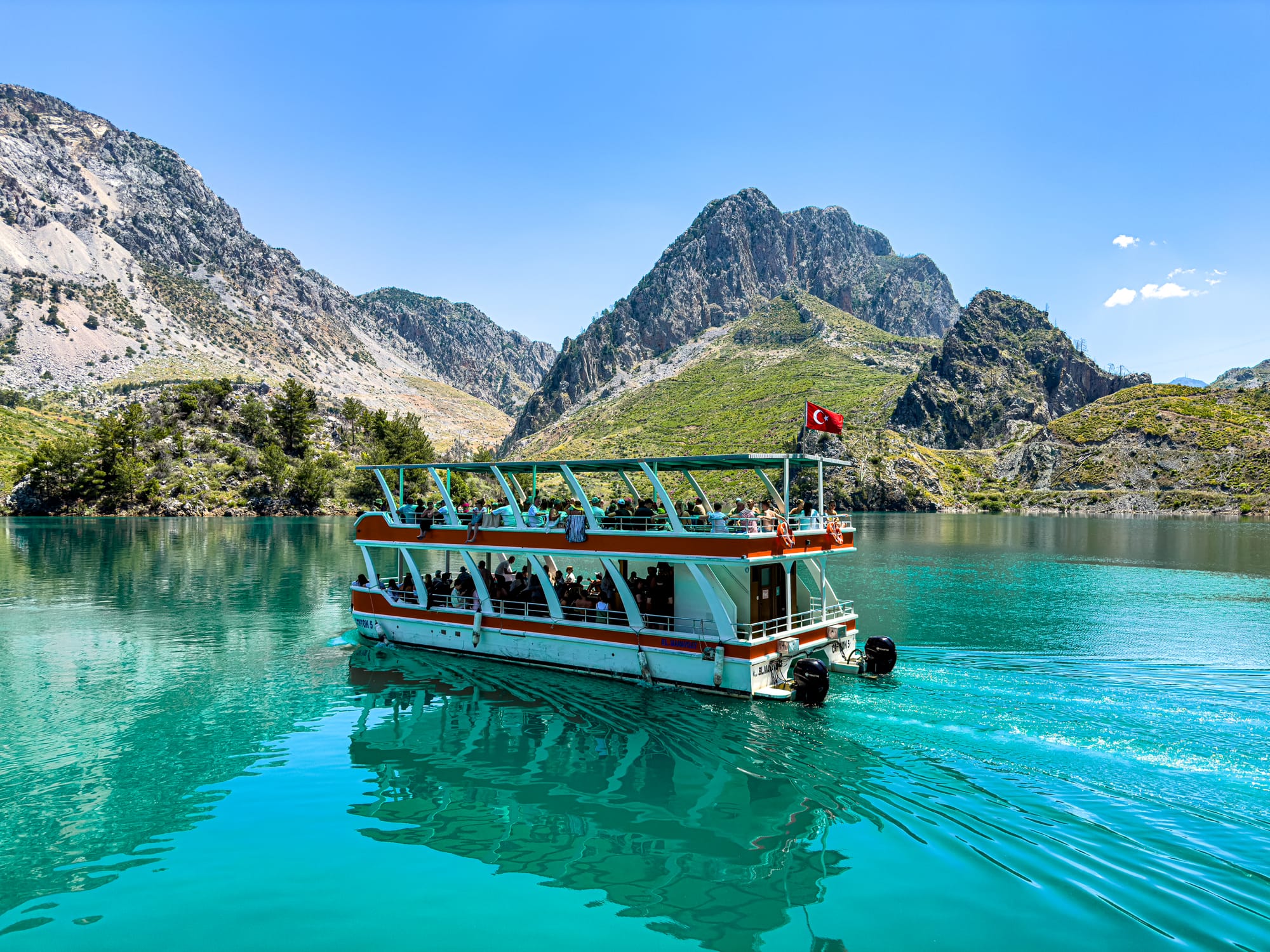
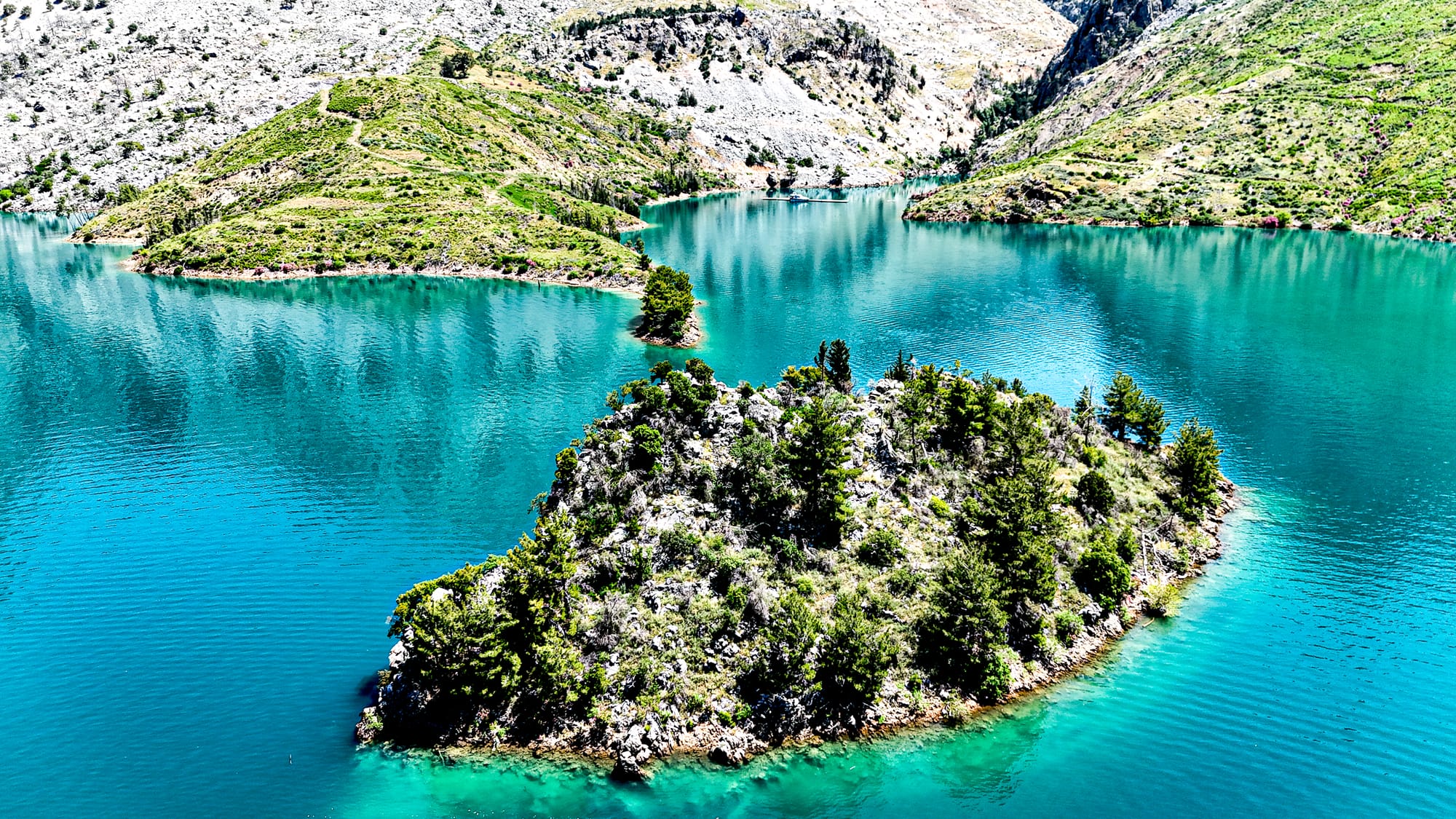
Boat tours through the canyon are relaxed and scenic, pausing at swimming spots where you can slip into the refreshing water and float beneath the shadow of pine-covered slopes. Along the way, you might spot herons, fish, or trees growing directly out of the lake’s surface—roots submerged, branches reaching skyward.
Düden Falls
Where river water meets the Mediterranean in midair.
Just east of Antalya’s city center, Düden Falls is a rare coastal phenomenon: a powerful waterfall that doesn’t empty into a riverbed or gorge, but instead plunges straight into the sea. Set within a small cliffside park, the falls are both dramatic and easily accessible—making them a favorite quick trip for locals and visitors alike.
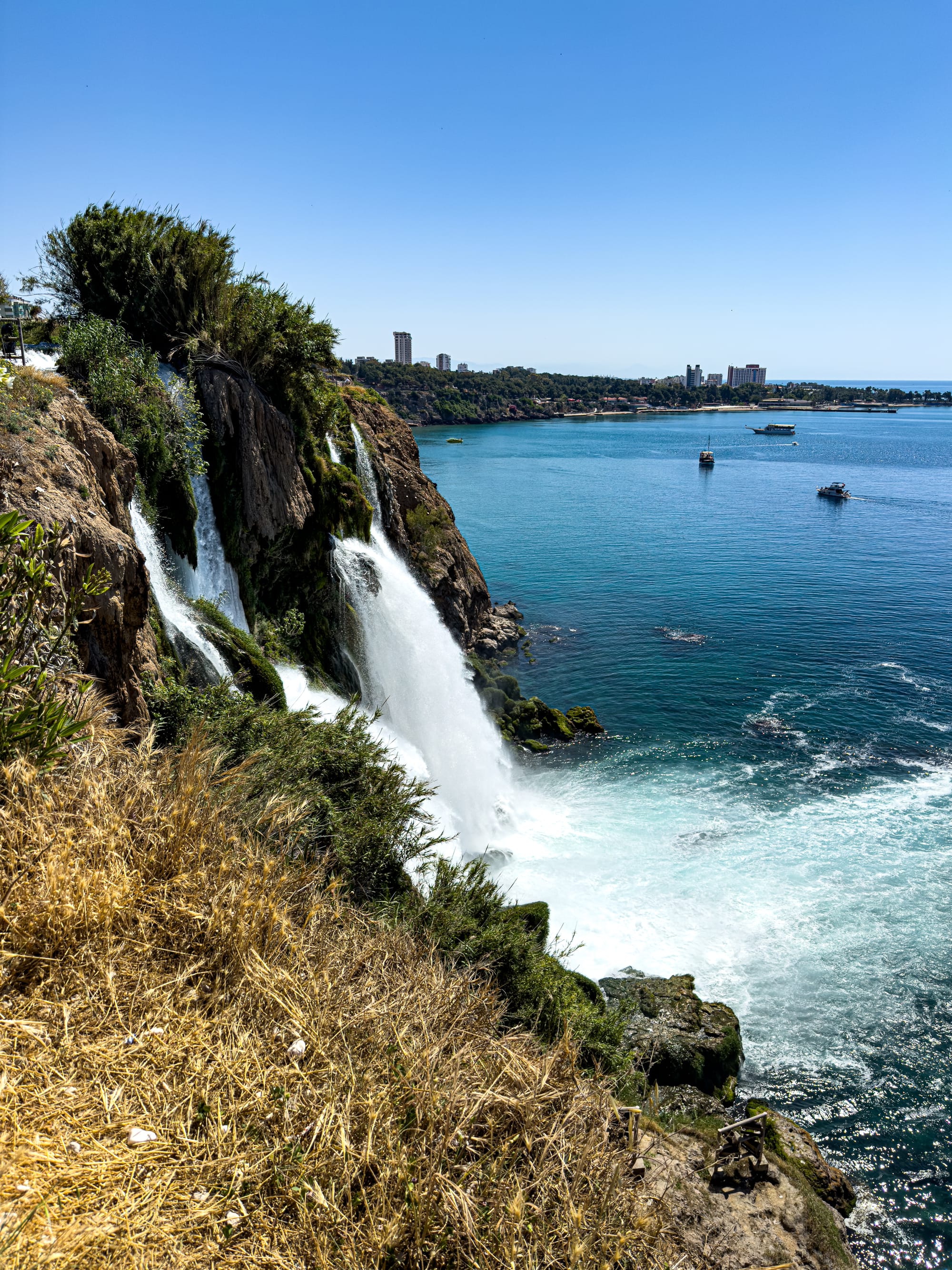
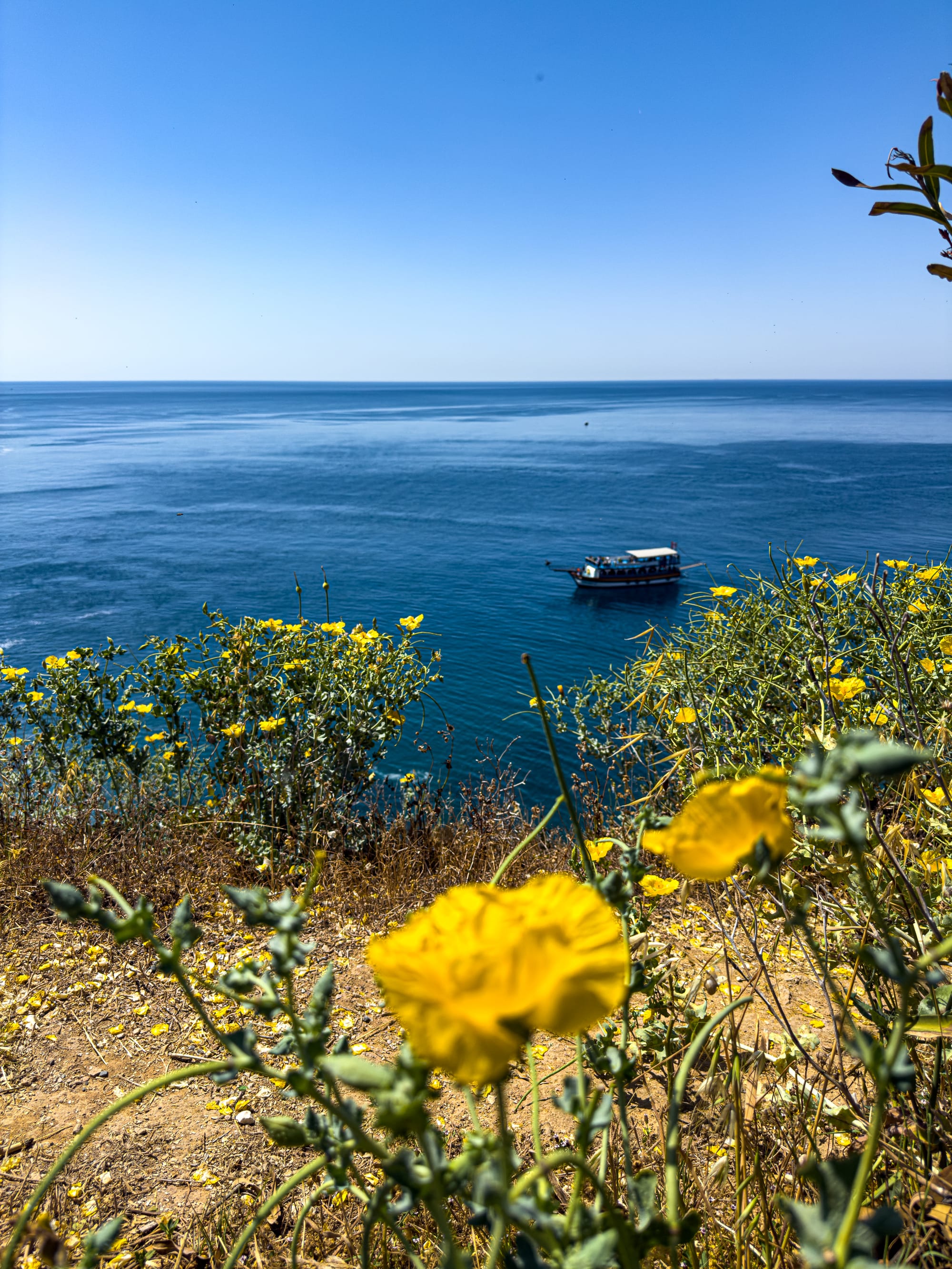
You can view the cascade from several park vantage points, or walk along the nearby paths to watch the spray catch the sunlight. On warm days, boats gather at the base of the cliff to see the falls from the sea, where the sight is even more striking.
İnciraltı Beach
Tucked along the coast just east of Antalya’s Old Town, İnciraltı Beach offers a gentler, more accessible alternative to the city’s better-known stretches of coast. Instead of rocky shores, this beach offers staircases that descend directly into the turquoise sea—meaning no water shoes, no stumbling, and no sore feet. Just an easy entry into the calm, clear waters.
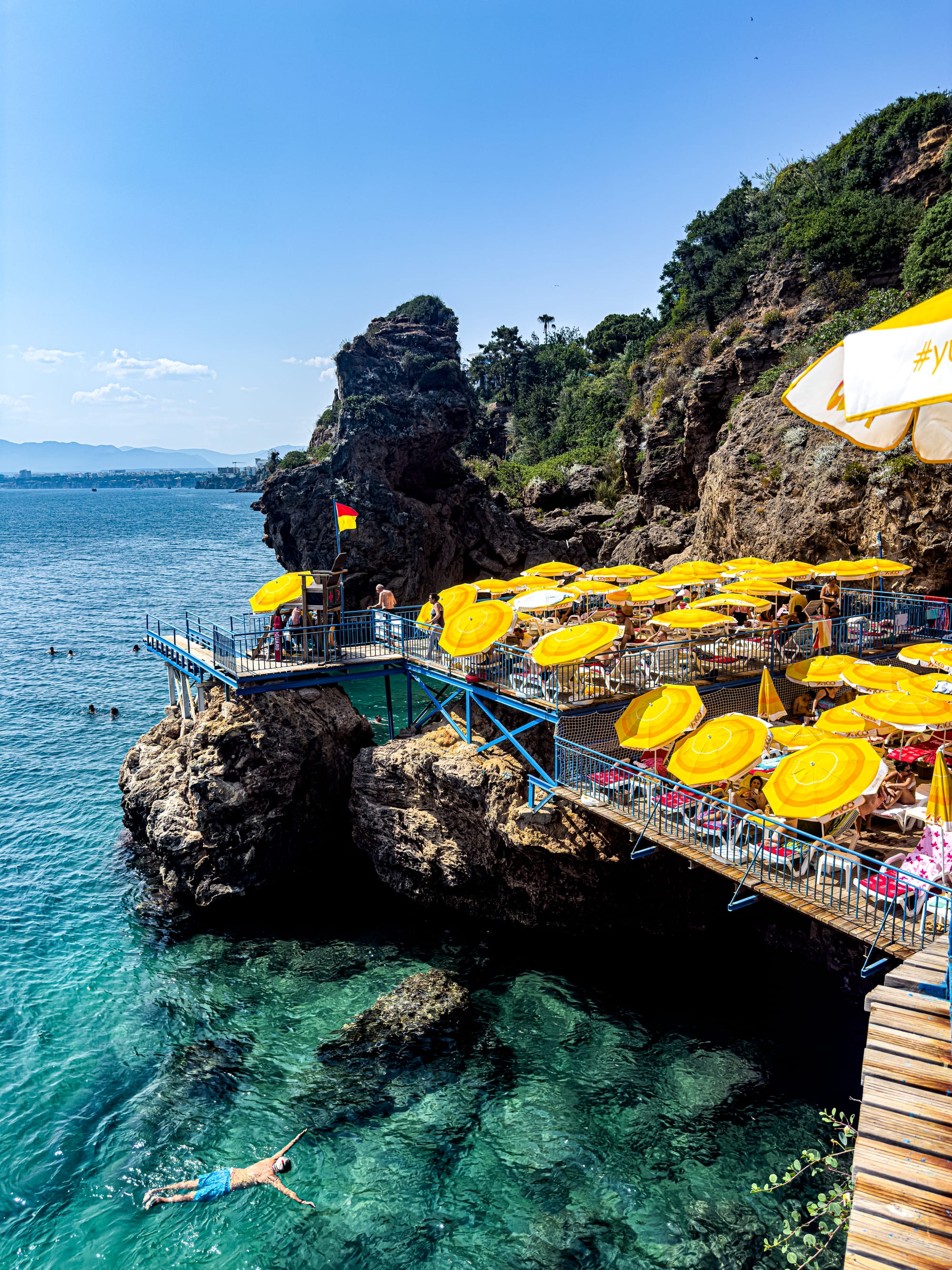
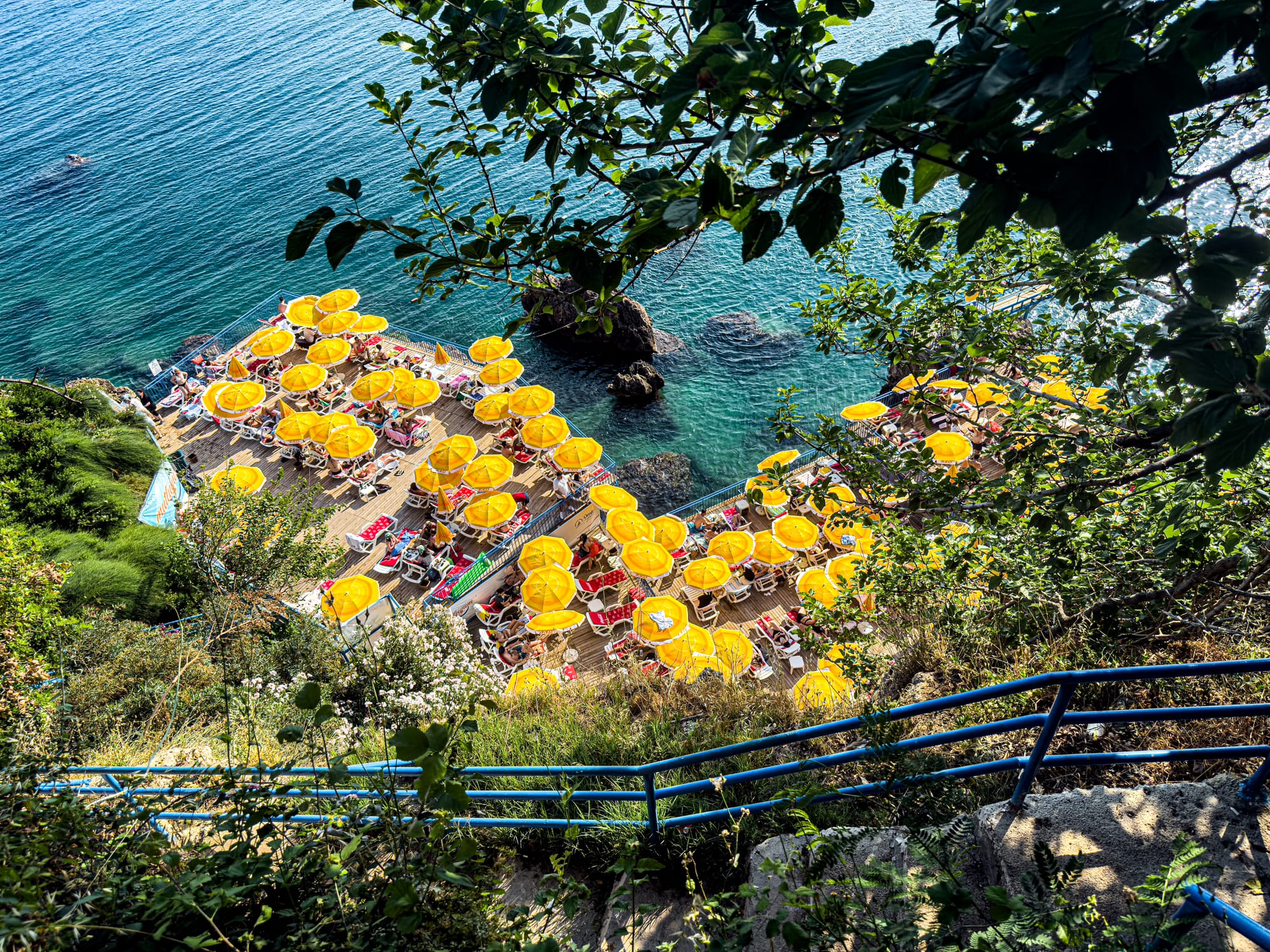
Bright yellow umbrellas dot the cliffside terraces, creating a postcard-worthy view from above. Though popular, the vibe stays relaxed, especially if you arrive earlier in the day to avoid the crowds and secure a sun chair. The cost is modest, and there’s no time limit on your stay—so you can spend all day alternating between swims and stretches in the sun.
Konyaaltı Beach
City beach energy with mountain views.
Konyaaltı Beach is one of Antalya’s most popular and easily accessible beaches—stretching for several kilometers beneath the dramatic silhouette of the Taurus Mountains. It’s a city beach with big energy: expect beach clubs, sunbeds, cafes, and a wide coastal promenade full of locals walking, biking, and gathering at sunset.
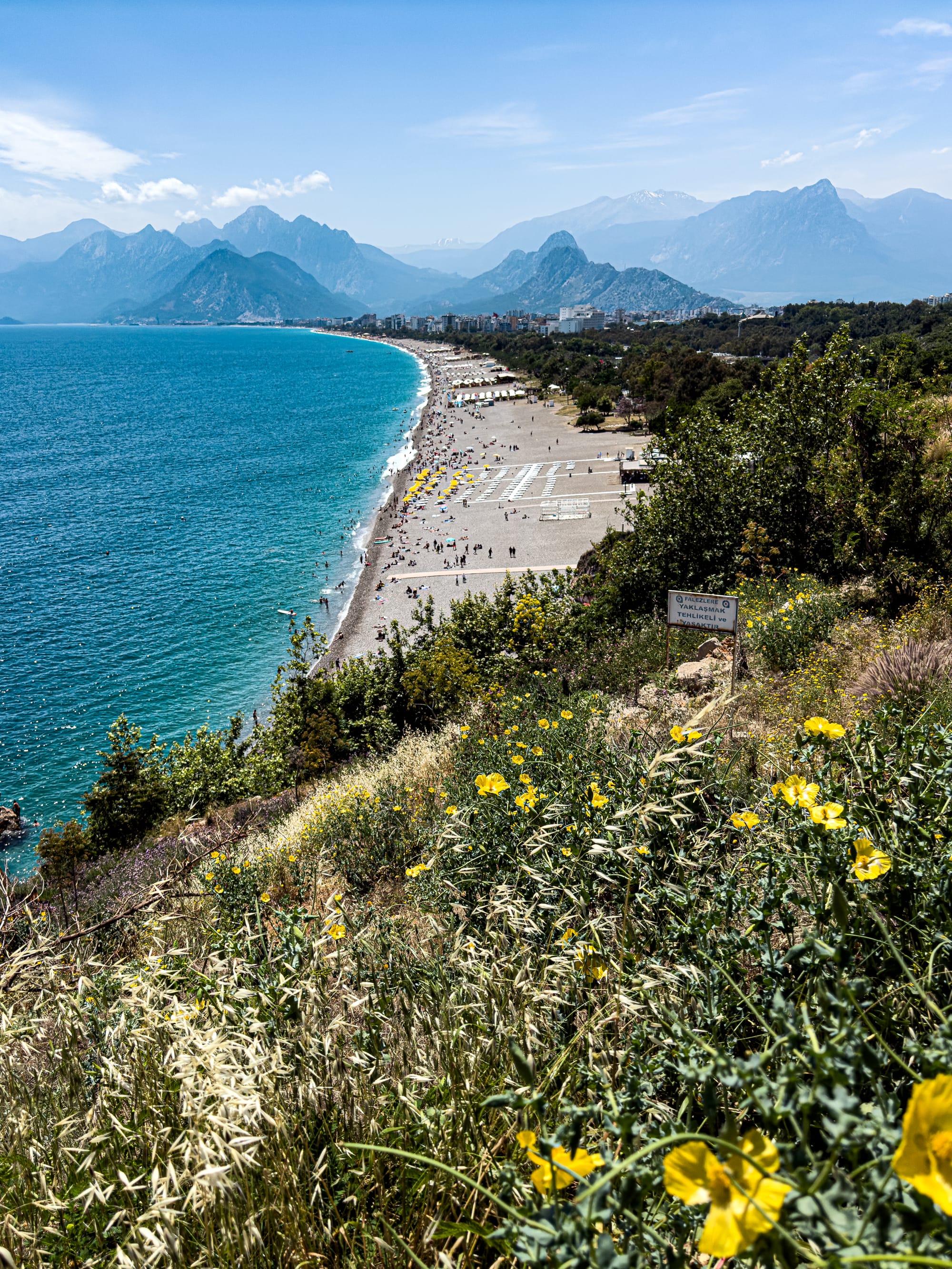
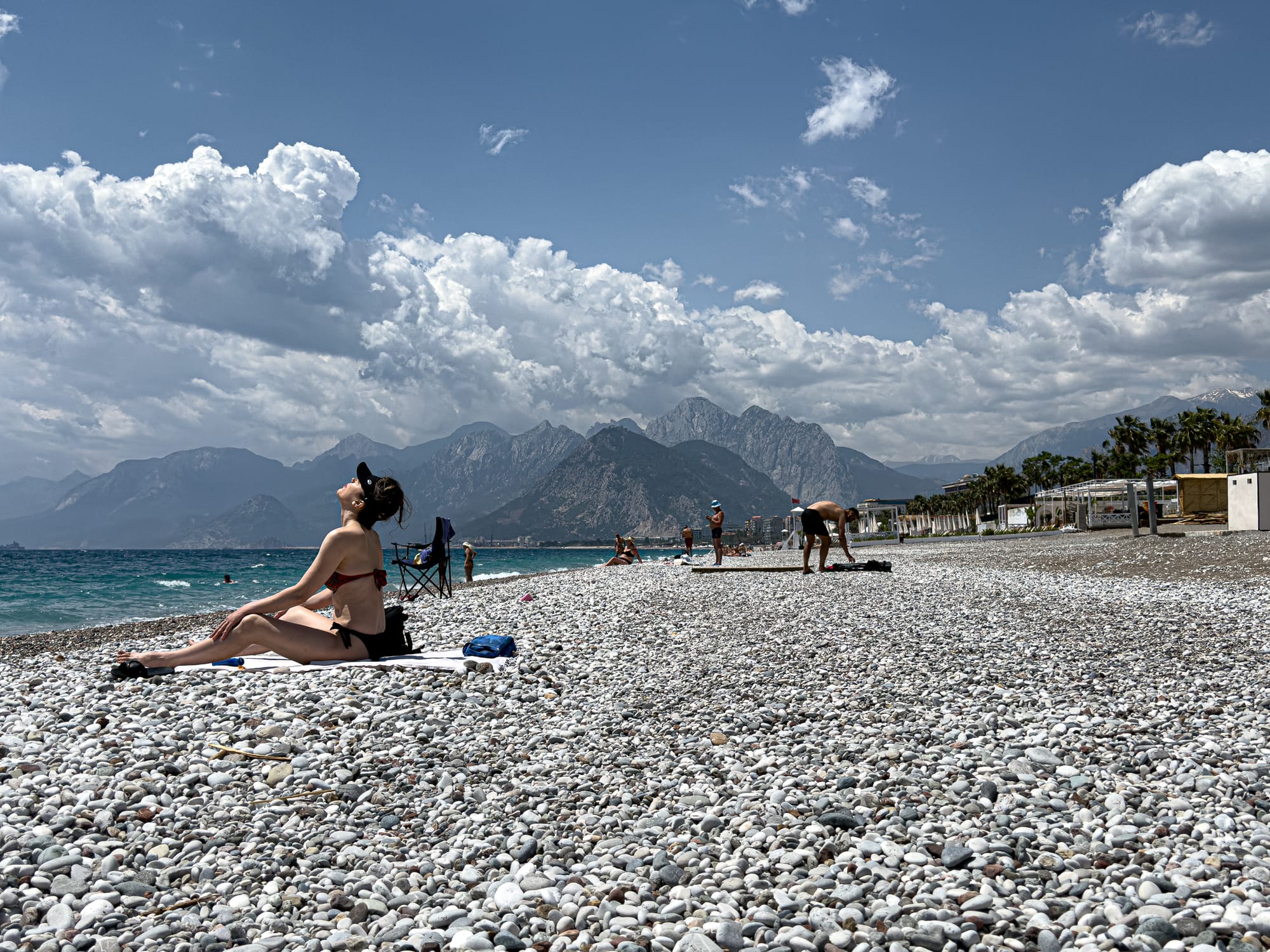
Unlike sandy beaches, Konyaaltı is made up of pebbles and stones, which can be hard on bare feet—swim shoes are strongly recommended for a comfortable entry into the sea. Still, once you’re in, the water is clean, refreshing, and perfectly swimmable.
Markets, museums, and local rhythms
Kaleiçi (Antalya’s Old Town)
Winding alleys, Ottoman charm, and coastal cliff views.
Kaleiçi is the historic heart of Antalya—a maze of narrow cobblestone streets, flower-draped balconies, and Ottoman-era houses nestled inside ancient Roman walls. It’s where past and present blur: one moment you’re walking past Hadrian’s Gate, the next you’re sipping tea under a bougainvillea vine or browsing rugs in a century-old shop.
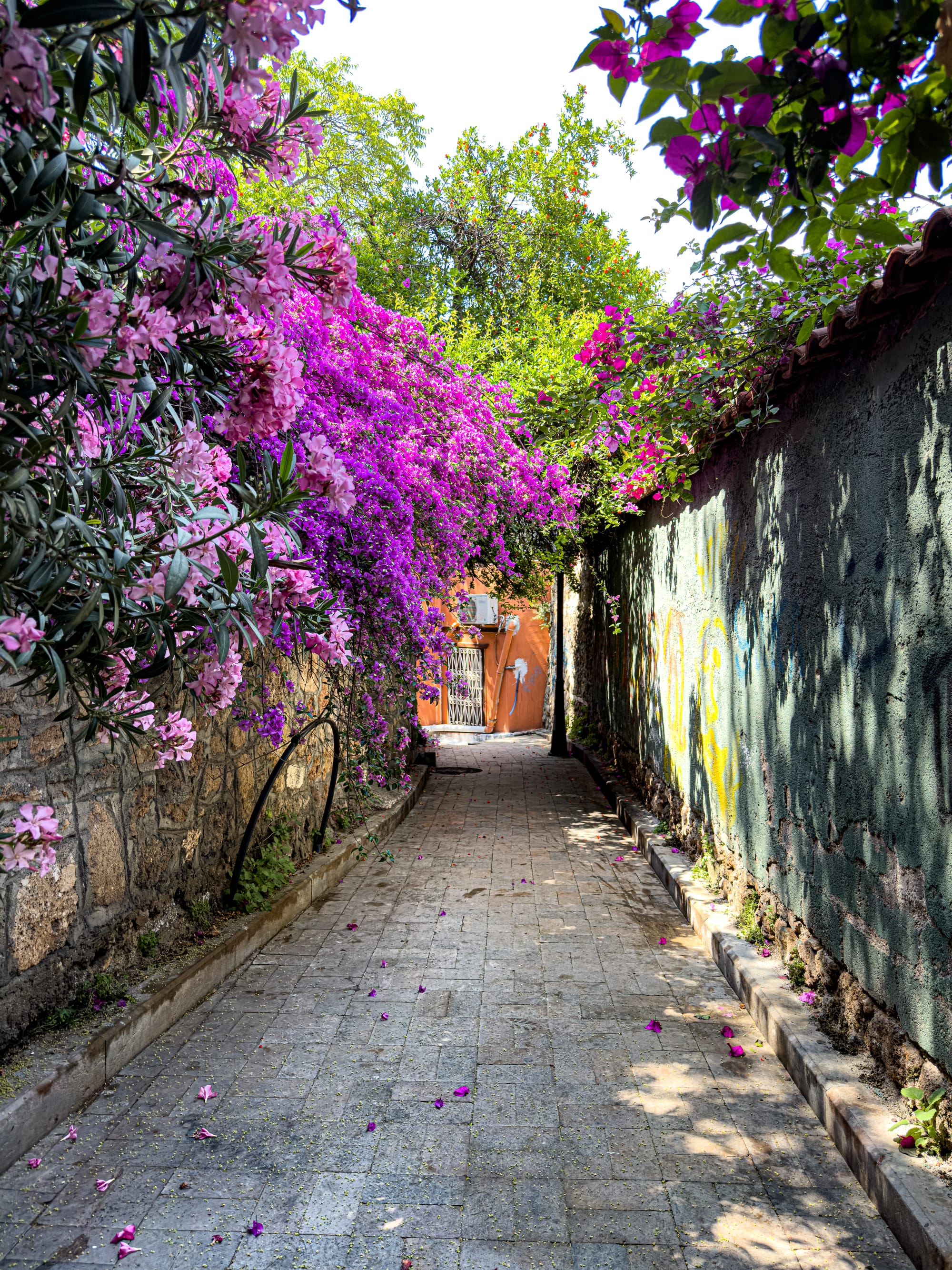
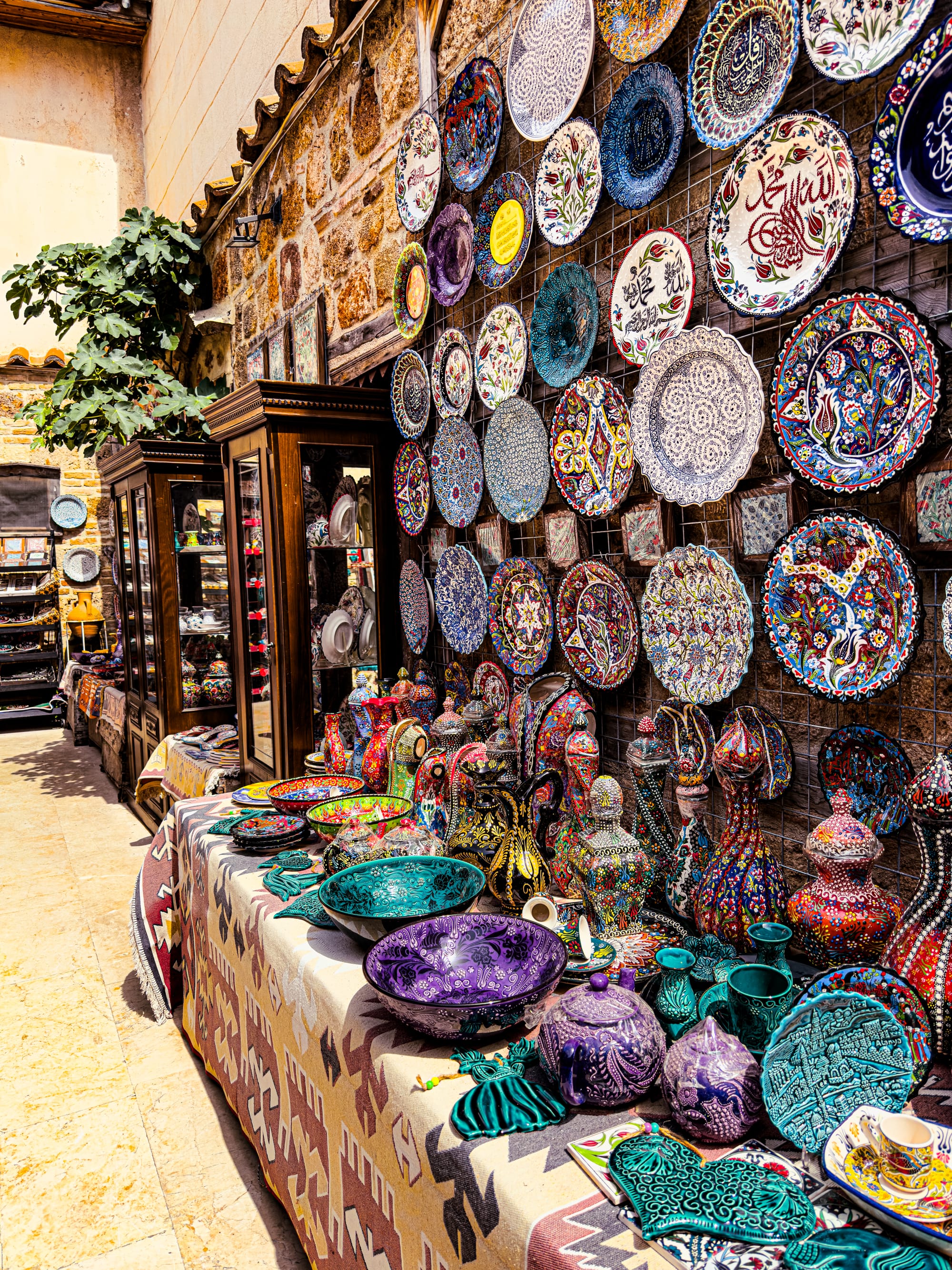
The neighborhood is packed with quiet surprises. Street cats curl on sun-warmed stone. A hidden viewpoint opens onto the marina. A courtyard antique shop glows golden in the late afternoon light. While it has a touristy feel in parts, it’s also home to artists, locals, remote workers, and small family businesses that give it a lived-in soul.
Antalya Archaeological Museum
Ancient craftsmanship, carved gods, and the silence of stone.
The Antalya Archaeological Museum holds some of the finest artifacts from the region’s vast network of ancient cities—including many pieces excavated from Perge, Side, and Aspendos. Its collections are thoughtful and varied: intricately carved sarcophagi, statues of emperors and gods, delicate pottery, gleaming mosaics, and coin hoards spanning centuries.
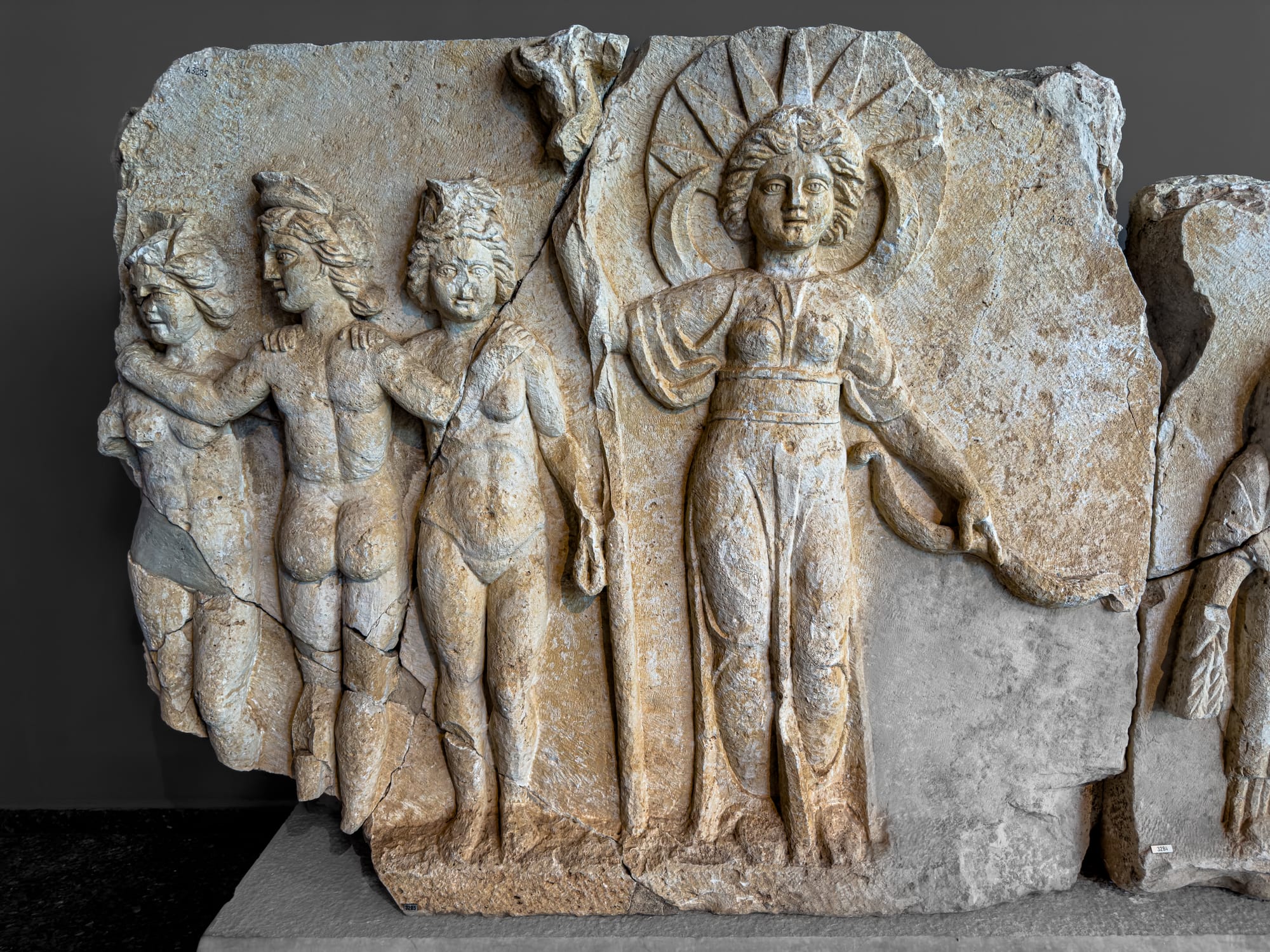
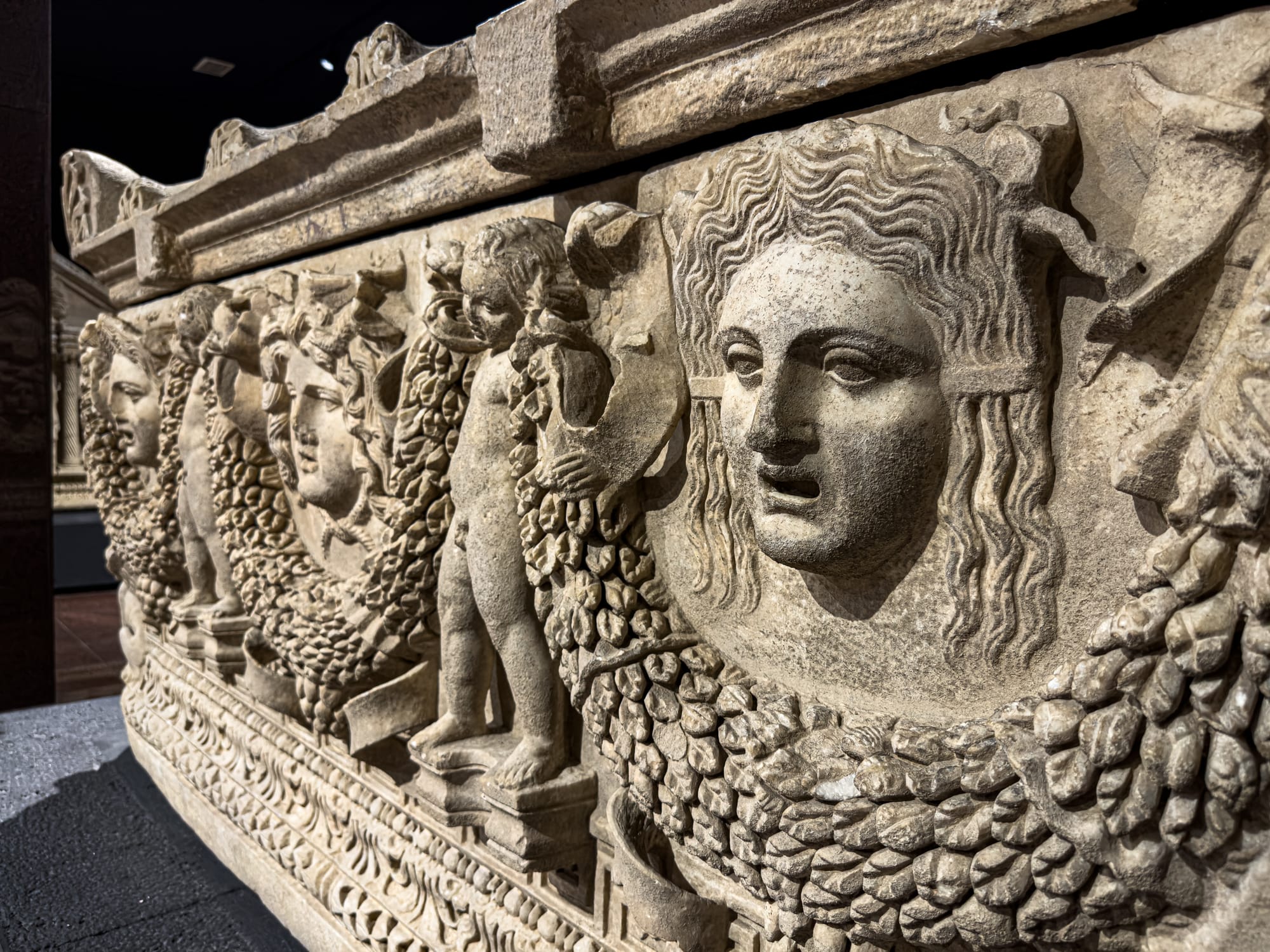
Inside, you’ll wander between quiet, high-ceilinged halls that invite close looking. Some busts have hollowed eyes that feel almost expressive, while the sarcophagi ripple with mythological scenes. Upstairs, you’ll find rare coins and religious artifacts. Outside, relics sit surrounded by flowers—and sometimes, a surprise appearance from a peacock.
Friday Market
Color, chaos, and a taste of local rhythm.
Held weekly in Antalya, the Friday Market is one of the best places to catch a glimpse of everyday life. Packed with locals buying their weekly produce, it’s a sensory feast: pyramids of peaches, heaps of glossy eggplants, bundles of herbs, and pomegranates stacked like rubies. Vendors call out prices, kids chase each other through the aisles, and the scent of fresh dill and vine leaves fills the air.


If you’re staying in Antalya with access to a kitchen, this is the spot to stock up on fruits and vegetables—cheaper and fresher than any grocery store. Even if you’re not cooking, it’s worth a wander just for the atmosphere. It’s a place where the city feels lived-in and real, grounded in the seasonal cycle and full of texture.
Sunset from Karaalioğlu Park
Clifftop calm with golden-hour glow.
Perched just above the sea cliffs near Hıdırlık Tower, Karaalioğlu Park offers one of the most stunning sunset views in all of Antalya. As the sun begins to drop, locals and travelers alike gather on benches and grassy overlooks, watching the sky shift from blue to flame to pink.
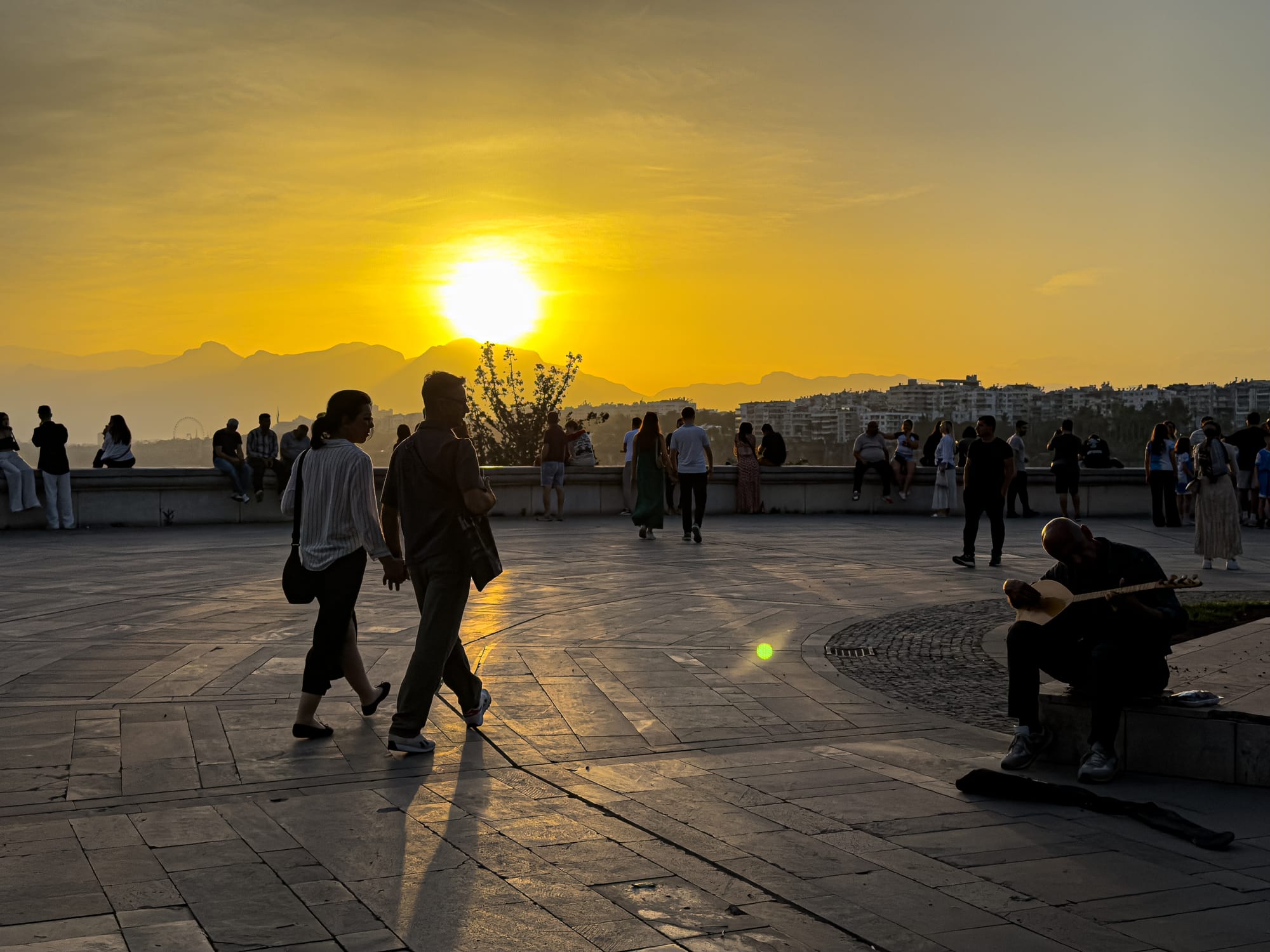
There’s a gentle stillness here in the evenings—sometimes accompanied by live guitar or the distant call to prayer. Vendors pass by with roasted corn or mulberry sorbet, and cats stretch across sun-warmed stones. From the clifftop edge, you can see the Mediterranean sparkle beneath you, with boats drifting in and out of view. It’s a simple ritual, but one that stays with you.
Vegan food in Antalya
Plant-based eating across markets, wraps, and seaside cafés.
Antalya isn’t the most obvious vegan hotspot, but it’s surprisingly accommodating if you know where to look. From veggie-packed lentil soups at local lokantas to falafel wraps in the Old Town and vegan manti near Konyaaltı, plant-based options are scattered throughout the city’s neighborhoods.
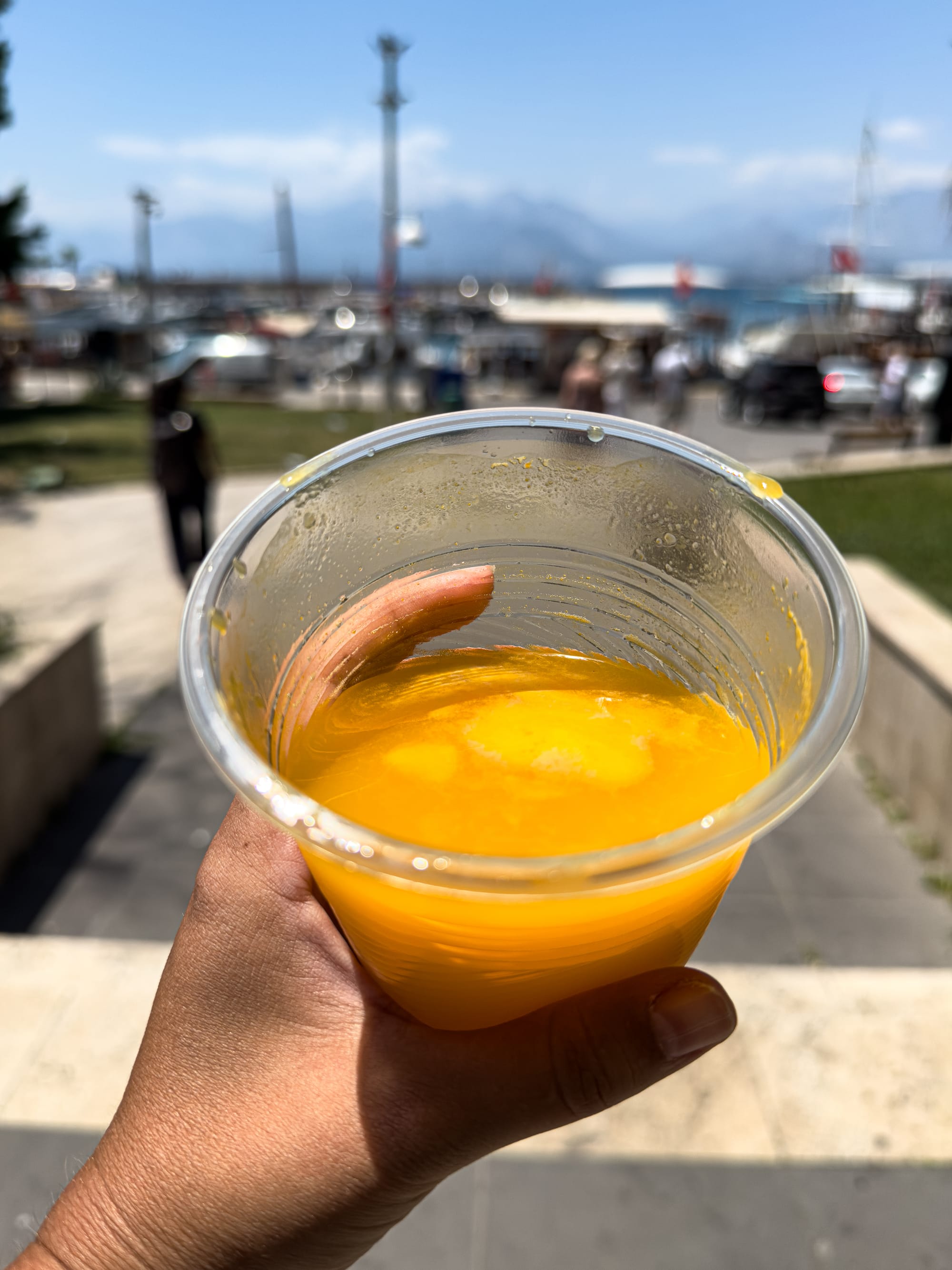


We found everything from vegan pide to açaí bowls and fresh-squeezed juices—and many restaurants clearly labeled their menus.
Essential tools for Antalya
For nomads living and working from Antalya, these tools made our stay smoother.
Saily Global eSIM
Instant global mobile data without needing a local SIM. Saily global eSIM gives you mobile data in Turkey and dozens of other countries—no need to buy a separate local SIM when you arrive. Great for digital nomads who hop between places and want one seamless solution that works everywhere.
SafetyWing (global health & travel insurance)
An affordable, digital-nomad-friendly insurance plan that covers both travel hiccups and medical needs. We like that it runs month-to-month and can be started even if you’re already abroad. Helpful for peace of mind, especially on remote islands where care may require transfers or added costs.
NordVPN
A lightweight, fast VPN that lets you secure your connection on public wifi—especially important when working from colivings, cafes, or airports. It also lets you access content as if you were back home, which is helpful for banking, streaming, or logging into sensitive accounts.
Wise (multi-currency payments)
Our favorite banking solution for multi-currency payments and avoiding bad exchange rates. Wise lets you pay in Turkish lira locally and manage funds across dozens of currencies. We used it to split group dinners, pay for tours, and withdraw cash without the large fees traditional banks charge.
Should you choose Antalya?
Antalya might not be the first place that comes to mind when you think of digital nomad hubs—but it quietly offers more than most. There’s only one coworking space, sure, but it’s perched right above the marina with a built-in social calendar. You’re steps from the Mediterranean, surrounded by history, and spoiled for day trips.
This isn’t a city of laptop cafes and late-night mixers. It’s a place where your workday ends with a walk along Roman walls, or a fresh juice. Where weekends might mean hiking to ruins or sailing to islands.
What makes Antalya great?
- Access to incredible nature and ancient history, often side by side
- A calm, beautiful coworking space with a built-in international and local community
- Great food (with enough vegan options to get by) and fresh produce markets
- Easy weekend trips to places that feel like a different century
Things to consider:
- Hills and stairs are real—expect a lot of walking
- The city has a strong tourist presence, especially near the Old Town and beaches
- Infrastructure can be patchy: not everything is made for remote workers
- It's much less affordable now than it used to be
If you’re looking for a high-energy, hyper-networked city, this may not be it. But if you want a place where you can think clearly, live peacefully, and dip into history between deep work sessions, Antalya has plenty to offer.
Read more
If you’re curious about how to make Antalya work for you, we’ve written extensively about our experience. Check out our Antalya guides for more information on what we enjoyed in the region.






